The History of the Rolex Day-Date, the Presidential Watch
A watch worn by celebrities and dignitaries, the elite’s choice… In short, the Crown’s flagship for luxury since 1956.
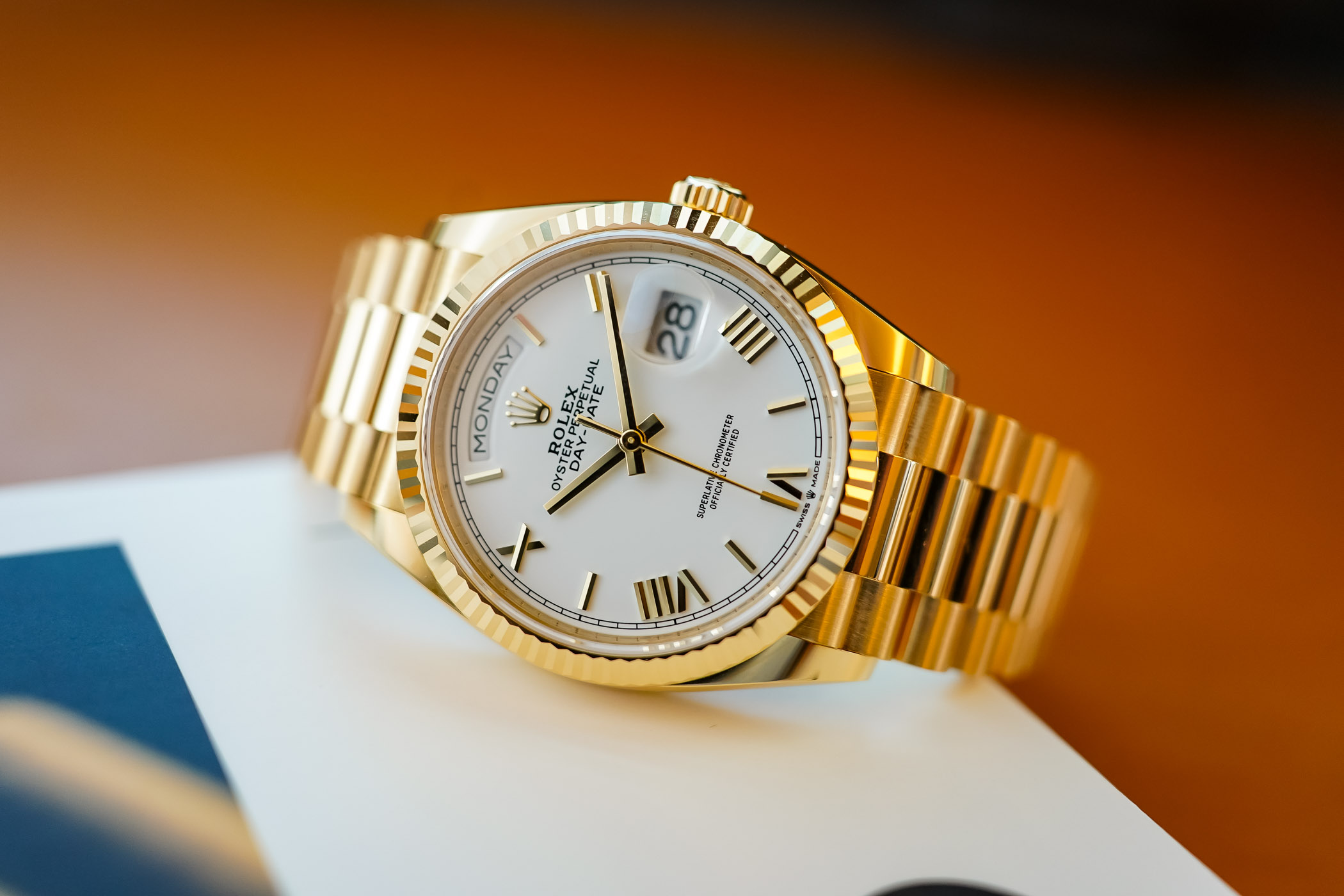
Since its founding, Rolex has been a powerhouse of Swiss watchmaking and the name is synonymous with luxury and success. Founded by Hans Wilsdorf as Wilsdorf and Davis in 1905, it wasn’t until 1908 that the patronym Rolex was registered as the brand name. Some of the most iconic models like the Submariner, Explorer, GMT-Master and Datejust might be fan-favourites, but only one is considered the pinnacle by Rolex, and that’s the “Presidential watch” most commonly known as the Rolex Day-Date. Unlike the others, it’s the only one exclusively available in precious metals, and it makes a statement on the wrist like no other. A bona fide status symbol, if you’ve got one, you’ve made it – as the saying goes…
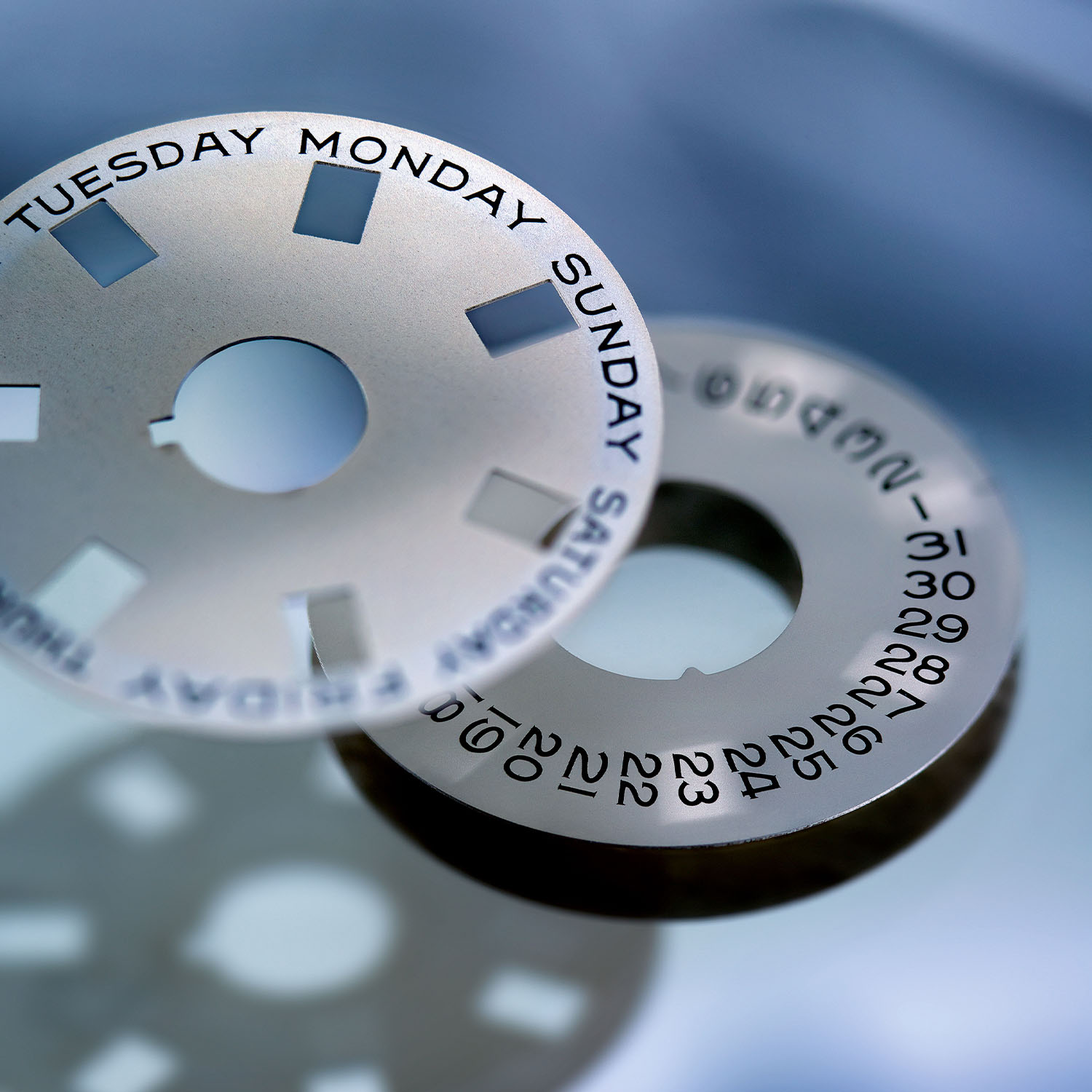
Day-Date Ref. 6510 and 6511 (1956 – 1957)
Introduced in 1956, the Day-Date replaced more complicated pieces like the 1949 Triple Calendar Moonphase (ref. 8171, a.k.a. Padellone) and that same watch in an Oyster case in 1950 (ref. 6062, a.k.a. Stelline). Neither model found great success (at least, back in the days, as we’re now talking about highly collectable pieces), and both were discontinued in 1953, never to be seen again in the Rolex portfolio.
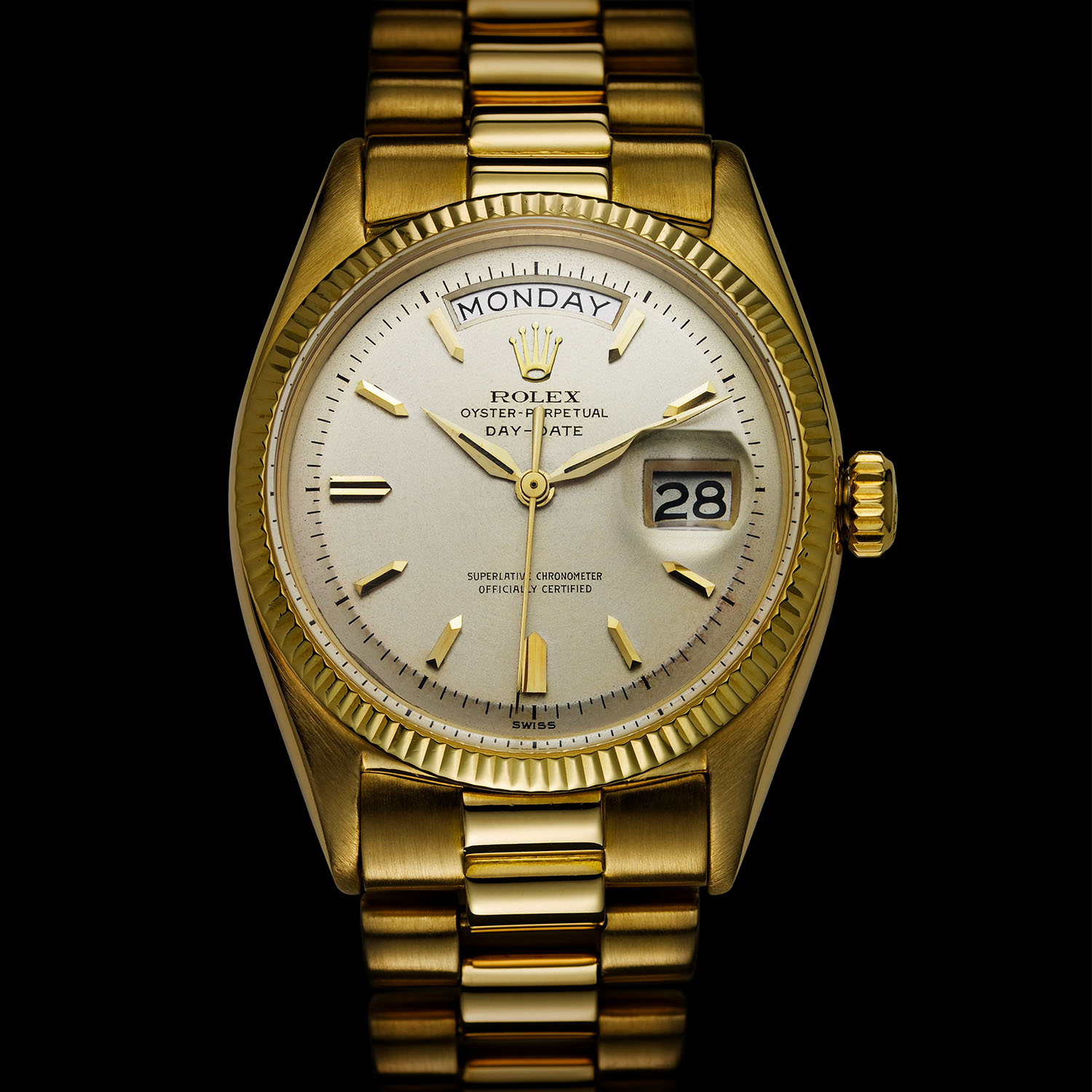
When presented in 1956, this made the less complex Day-Date the “complicated one” in the range. The Rolex Day-Date was the first wristwatch with a day of the week written out in full, which sat in an arched window at 12 o’clock with a separate date at 3 o’clock – a display that we now associate with most day-date watches on the market, whatever the maker. The mechanism was described in Swiss patent CH322341A of 1955, as invented by Rolex engineer Marc Huguenin.
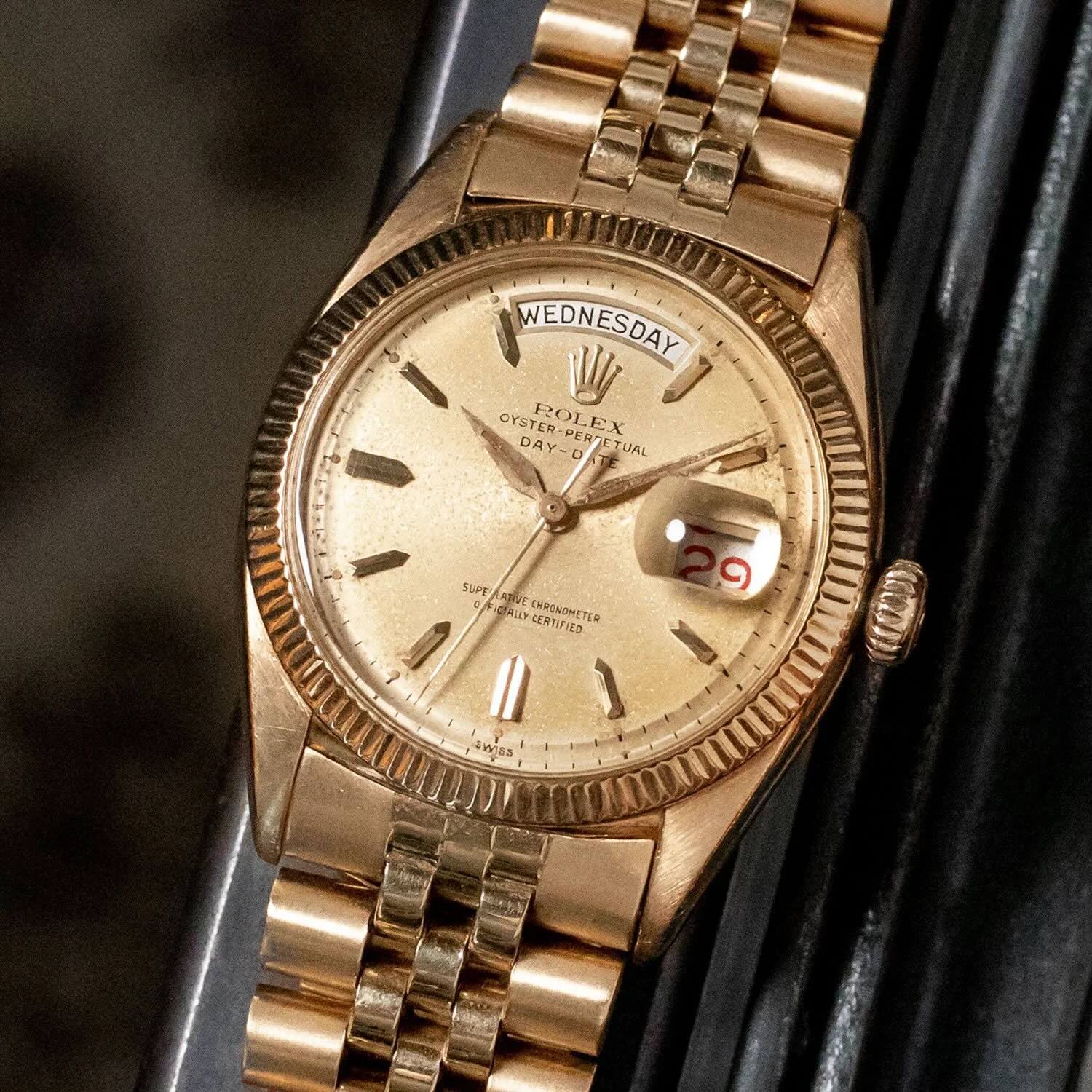
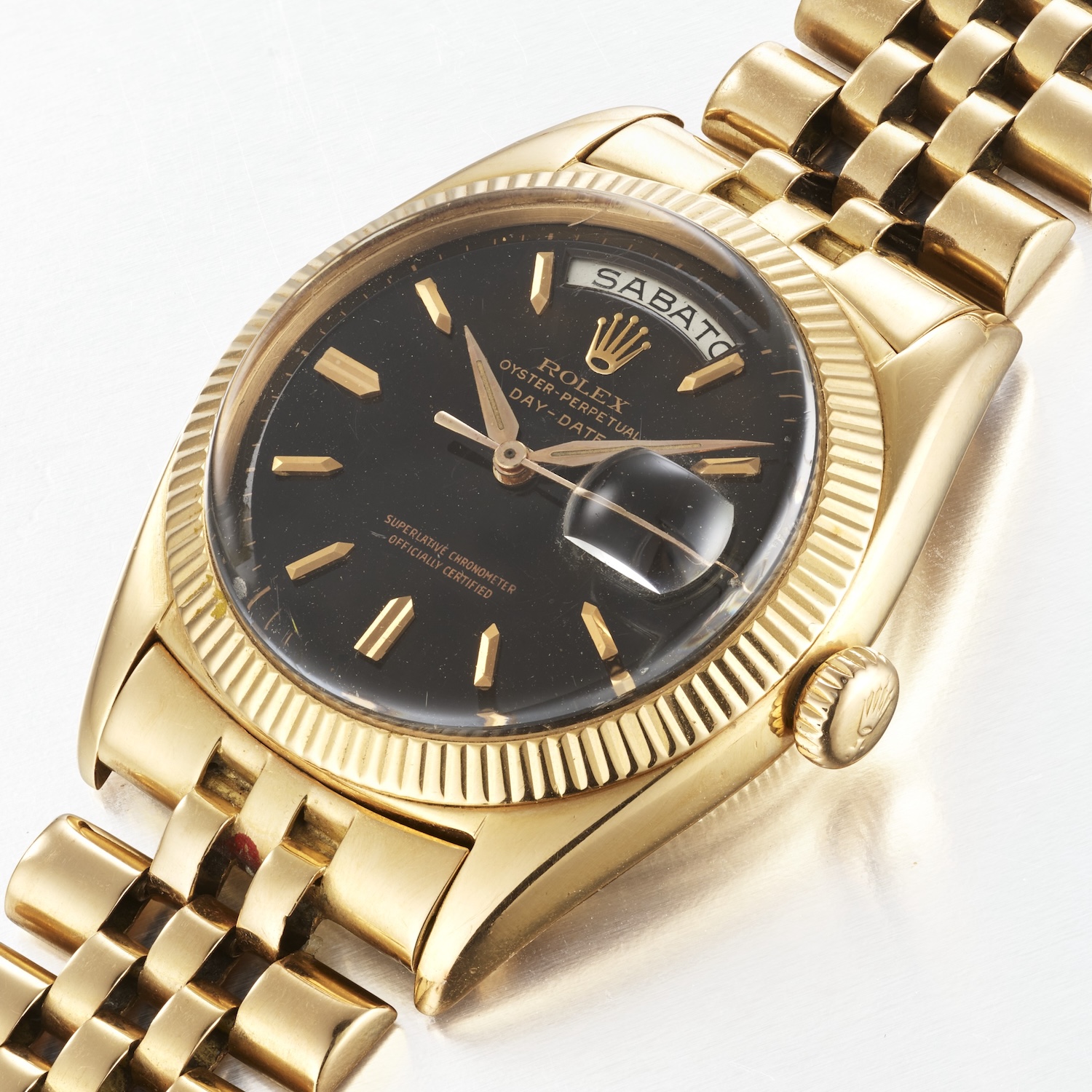
The Rolex Day-Date was the hero watch from the beginning, available in yellow, pink and white gold with a smooth bezel (ref. 6510) or fluted (ref. 6511). These early 1956 models came with a Jubilee bracelet, but an entirely new President bracelet would soon become standard.
The Oyster case was 36mm in diameter and had a twin-lock crown with two o-rings, allowing for water resistance of 100 metres – surprisingly good for a watch of this category. This crown system was first seen in 1953 on the Submariner. The dial had gold applied indices and Dauphine-style hands over a champagne or black dial (the latter being less common), and the date window had a cyclops lens like the prior Datejust. These first two references were only produced for one year. Why? The early calibre had technical issues with advancing the date, so ref. 6611 debuted in 1957 to address the shortcoming.
Day-Date Ref. 6611 (1957 – 1959)
This was essentially the same watch with an improved movement, calibre 1055, that solved the mechanical glitches. It had 25 jewels and a beat rate of 18,000 vibrations/hour (2.5Hz), and the improvements changed the dial text from “Officially Certified Chronometer” to “Superlative Chronometer Officially Certified”. It was the first Rolex to feature this now-common new designation. A minor aesthetic update was the switch to Alpha hands over Dauphine, but the watch otherwise remained the same. The Rolex Day-Date Ref. 6611 dials had a “pie-pan” style dial with the edge sloped downward. There were rare variants and customizations in the early days, so we’ll just stick to the most common models. In addition, only the most common reference numbers within a series will be highlighted as there are just too many to dive into for such an article, including one-of-a-kind models. It’ll mainly be the yellow gold watches with the President bracelet moving forward, although others will be specified as needed.
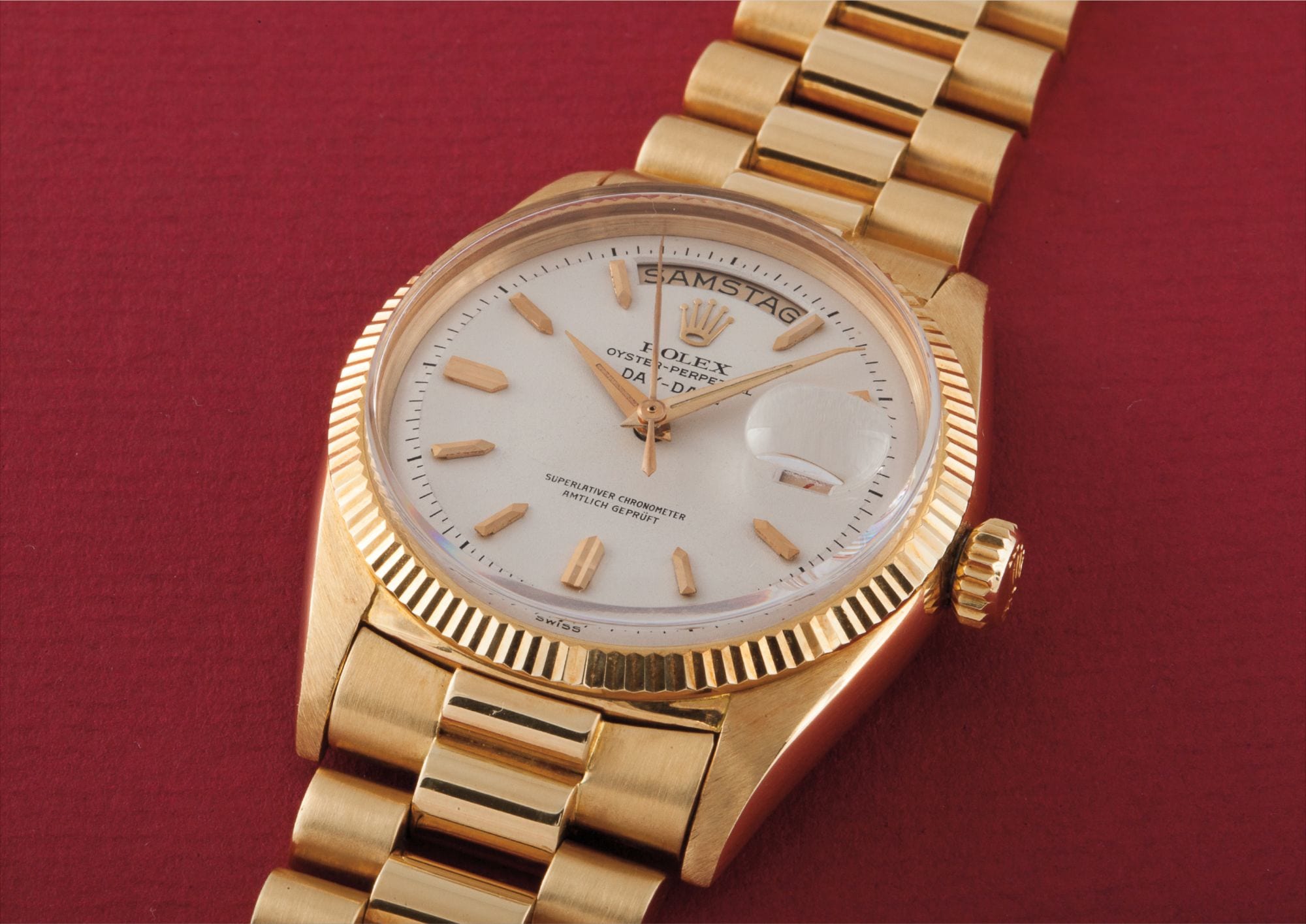
As was the case with all Rolex watches at the time, the crystals were acrylic, but the Day-Date shifted to sapphire earlier than other models (around 1977). Also, the bracelet found after 1956 was unique to the model and known as the President (hence the name?), which was and still is a 3-link bracelet with rounded links like the Jubilee.
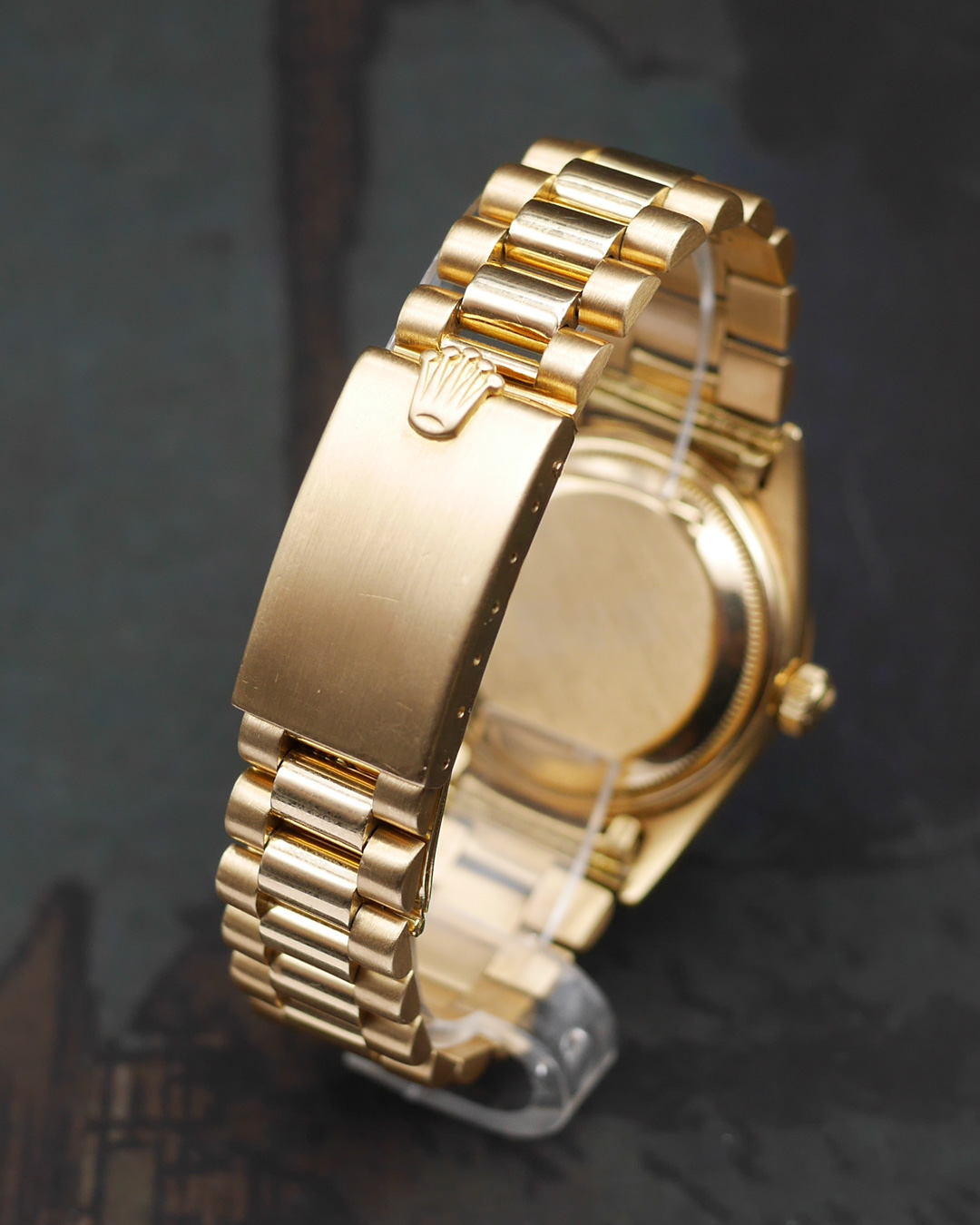
Many US presidents wore the Day-Date model as well, including Ronald Reagan, Richard Nixon and Bill Clinton, and it’s believed that Lyndon B. Johnson was the one who got the “President” nickname attached as he was the first to wear one in office. Rolex ads even featured the Day-Date as the “President’s Watch” at the time. John F. Kennedy was notoriously gifted one by Marilyn Monroe in 1962 with an inscription on the caseback, but he didn’t wear it for obvious reasons and had staff “get rid of it”. That piece (or at least what some believed it to be) surprisingly resurfaced decades later and sold at auction for US 120,000 in 2005 – the authenticity has since been challenged…
So, was it Johnson or the unique bracelet that contributed to the “President” nickname for the Day-Date? I’m leaning towards US presidents based on ads at the time, but it’s all just another part of Rolex lore.
Stainless Steel?
Remember how we said that the Day-Date is the only model available in precious metals? Well, there’s an asterisk on that one. For some unverified reason, there are five Day-Date 6611 stainless steel models known to exist – one sold for CHF 50,600 at auction in 2002, another one for CHF 170,100 in 2022. This was undoubtedly an anomaly (likely prototypes) and the ultimate prize for collectors, kind of like a 1943 US copper penny.
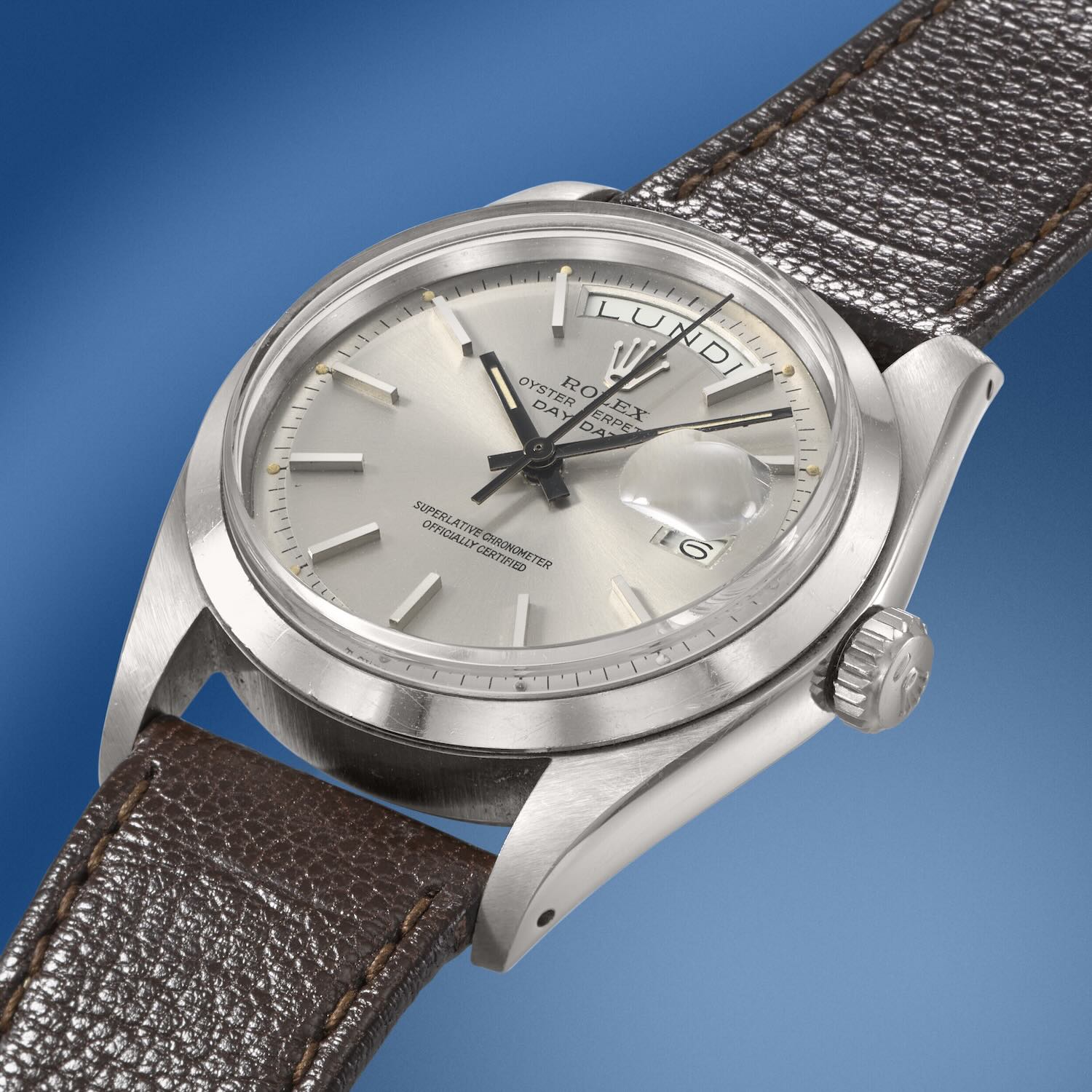
Day-Date Ref. 1803 (1959 – 1976)
This reference is unique as it represents the last of a few things. It’s the last Day-Date to use an acrylic crystal, as all subsequent references switched to sapphire. The Day-Date again made that switch earlier than other models as it represented the most premium piece from Rolex. Acrylic is warmer and, in the case of this model, has a taller and boxier profile than sapphire. Of course, sapphire is much harder and scratch resistant and today can be made to mimic the shape and vibe of older acrylic crystals. Ref. 1803 was also the last to feature the “pie pan” dial, as it was subsequently replaced by more conventional counterparts.
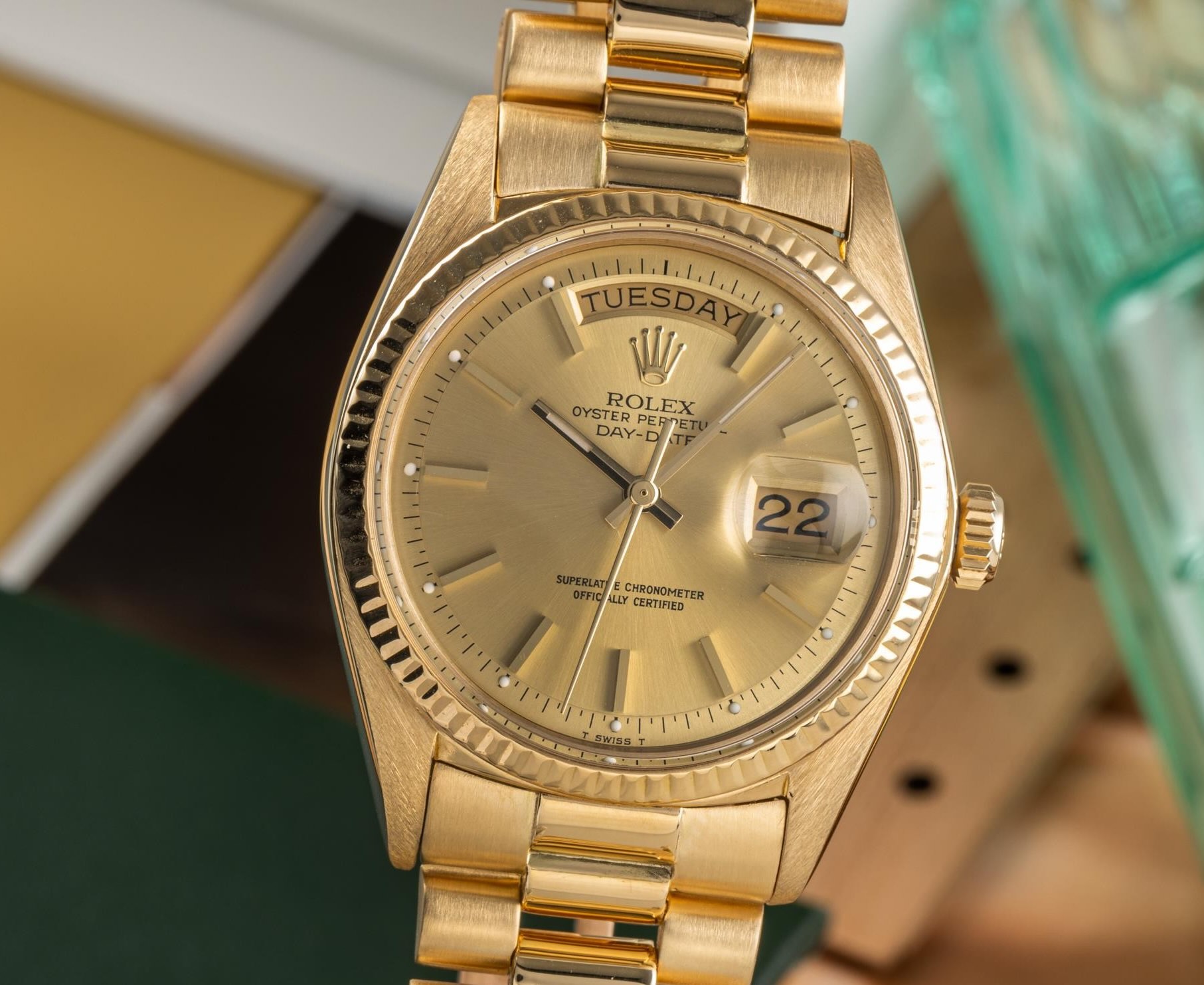
Interestingly, the President bracelet and even rivet-style Oyster bracelets at the time were hollow, which is an attribute that goes back to the originals from 1956. The weight and precious metal content were, of course, lower than today, and that’s a way to quickly identify older references. The bracelet’s “Crownclasp” was a hidden clasp that made the bracelet itself look seamless, but a raised coronet identified its closing point. Although the President bracelet was and continues to be exclusive to the men’s Day-Date, a women’s variant appears on Lady-Datejust models. No other men’s watches have it fitted from the factory.
A new set of hands was also introduced with the 1803 (and 1800 series overall), going from leaf-shaped on earlier models (ref. 6611 and before) to straight hands – you won’t see the typical Mercedes hands on Day-Date models. A quick note – until 1977, Rolex never matched dial options/configurations to serial numbers, so it was quite the Wild West with a seemingly “unregulated” amount of variances floating around, which is again why this article focuses on core models and references. The 1803 tends to be the most affordable model on the preowned market due to early (and less desirable) features like the acrylic crystal and no quickset date, as well as a long production run.
Calibre 1555 and 1556
Ref. 1803 was initially powered by the upgraded calibre 1555 with a free-sprung Micro-Stella balance but not a quickset function. The weekday and date had to be set by rotating the hands past midnight until they were set correctly. In the mid-1960s, calibre 1556 was used with a higher beat rate of 19,800vph and one extra jewel (now 26 jewels), but still not a quickset function. In 1972, calibre 1556 was updated with a hacking feature to stop the seconds hand for more precise timing. These were the first fully in-house movements for the Day-Date model, as the prior ones were outsourced. For almost two decades, the 1555 and 1556 calibres were used in a dozen Day-Date models, give or take, but their shortcomings ultimately demanded change. It wasn’t until the late 1970s that calibre 3055 brought the needed quickset date feature to ref. 18038, inching the model into the modern age.
Day-Date Ref. 18038 (1977 – 1988)
This model wasn’t a big aesthetic departure from earlier four-digit models (ref. 1803, for example), and the core model had the traditional 36mm Oyster case in yellow gold with a fluted bezel and President bracelet. As mentioned earlier, with all Day-Date models, there are countless 18038 variances for those with deeper pockets, such as diamond indices, gold/diamond bezels, custom dials and so on, so we’ll again stick with the core, conventional models.
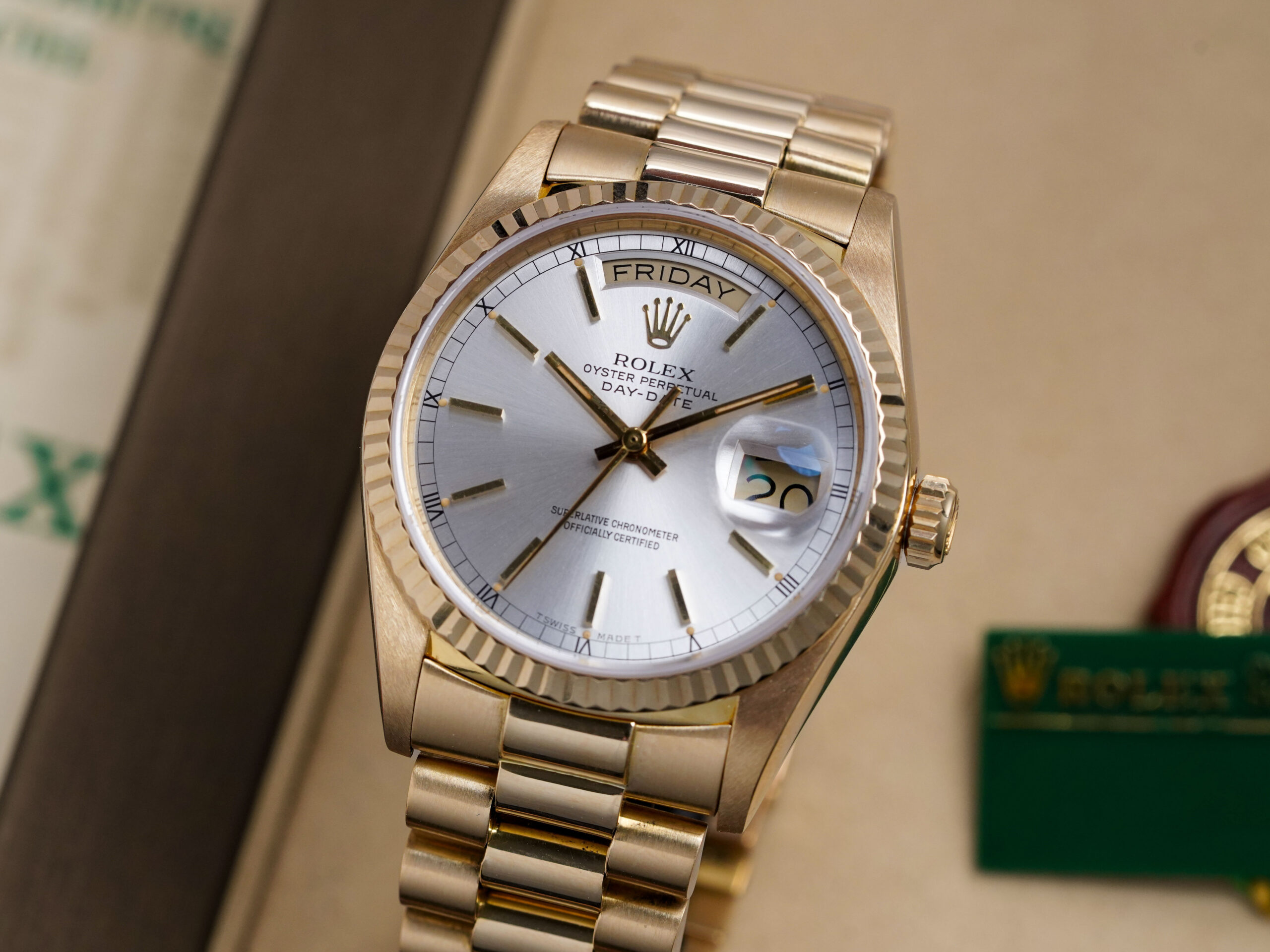
Ref. 18038 was a game changer of sorts for the Day-Date, moving from acrylic crystals to sapphire, moving to flat dials from the “pie pan” variants (creating a larger-looking dial area) and most importantly, upgrading to calibre 3055. The new quickset date was a huge convenience for those who didn’t wear their Day-Date consistently and the beat rate increased to 28,800vph (4Hz) for more precision and a smoother sweep of the seconds hand. Things weren’t perfect, however, as this was a “single quickset” movement, meaning only the date could be set directly via the crown, while the day of the week still required the laborious movement of the hands.
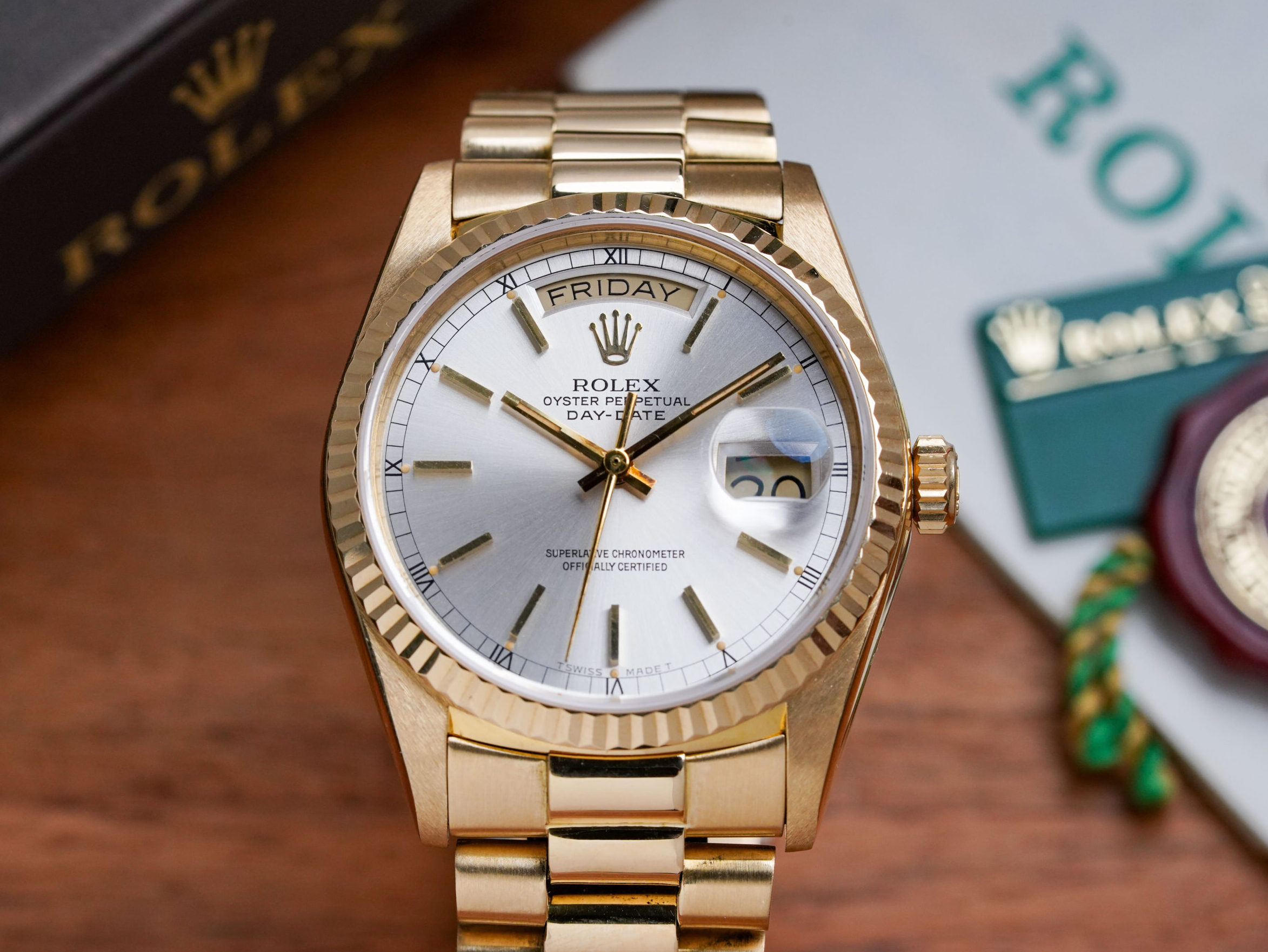
At this point, the last digit of the serial number indicated the finish and material of the watch, so things were a bit more in order from a cataloguing standpoint.
Quartz Crisis – Oysterquartz and Calibre 5055 (1977 – 2004)
The Quartz Crisis of the 1970s and 1980s was quite a disruptor (to say the least) and ultimately led to a quartz variant of Rolex’s Day-Date model. Not so much out of necessity but to follow the trend of the era. Mechanical models never ceased production. The one we’ll focus on is ref. 19018, which is equivalent to models like the aforementioned mechanical ref. 18038. It’s also the most common quartz variant found today on the secondhand market. Five years in the making (starting in 1972), quartz calibre 5055 was introduced in the Oysterquartz Day-Date in 1977. Oysterquartz Datejust models received calibre 5035, which was curiously not (initially) COSC-certified. That said, all quartz movements were far more accurate than COSC-certified mechanical counterparts.
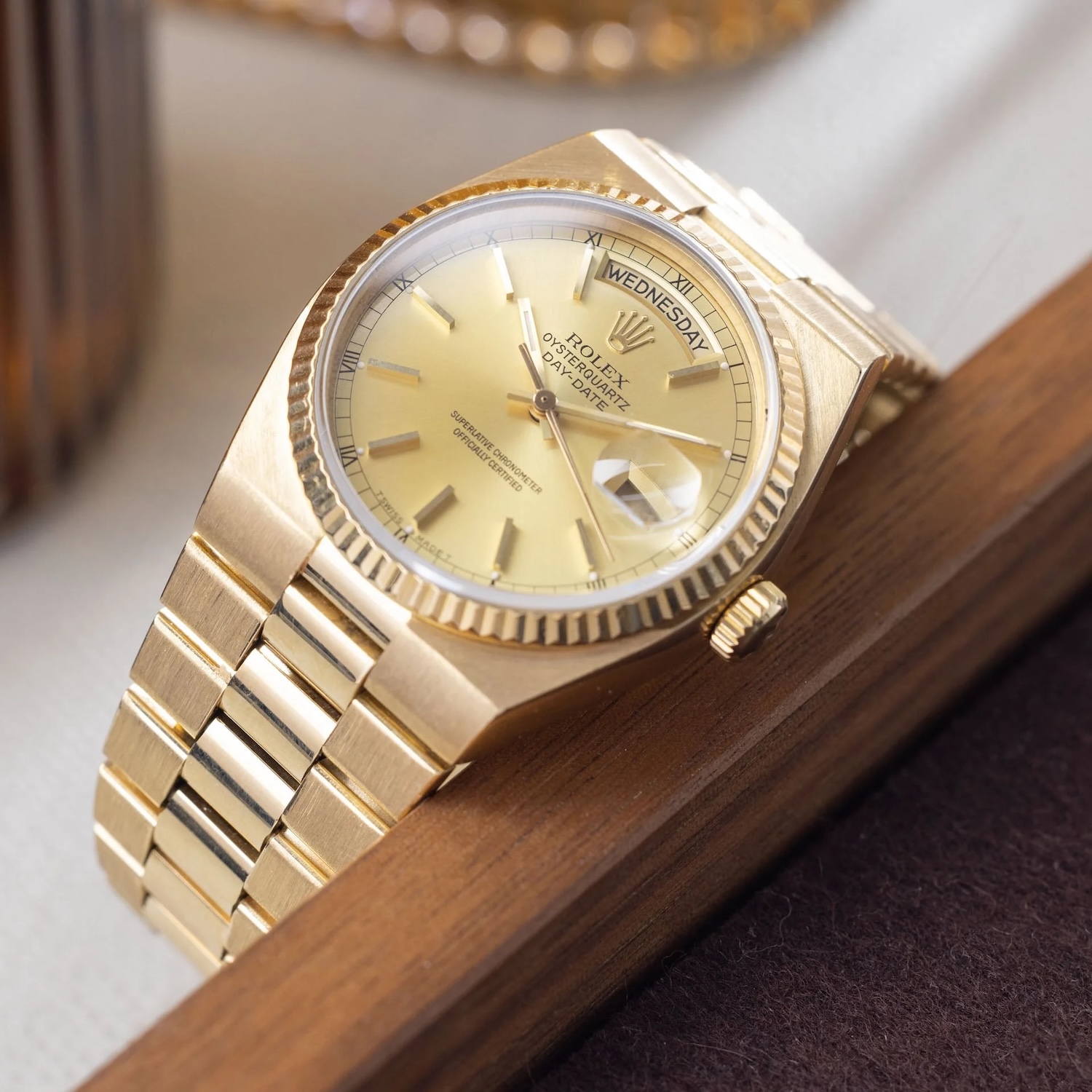
Being a battery-operated quartz movement, the jewel count was low at 11, and it had a 32khz oscillator (1khz is equal to 1,000Hz for reference). Calibre 5055 (and 5035) were produced in-house and considered by many at the time to be superior to calibre 3055 in ref. 18038, and certainly more precise. It came with a quickset calendar function and hacking seconds. All Oysterquartz Day-Date models had “Superlative Chronometer Officially Certified” printed on the dial and it wasn’t until 1979 that Oysterquartz Datejust models received the designation with an upgraded calibre 5035. Interestingly, Rolex stopped certifying all quartz movements in 2002, near the end of Oysterquartz production.
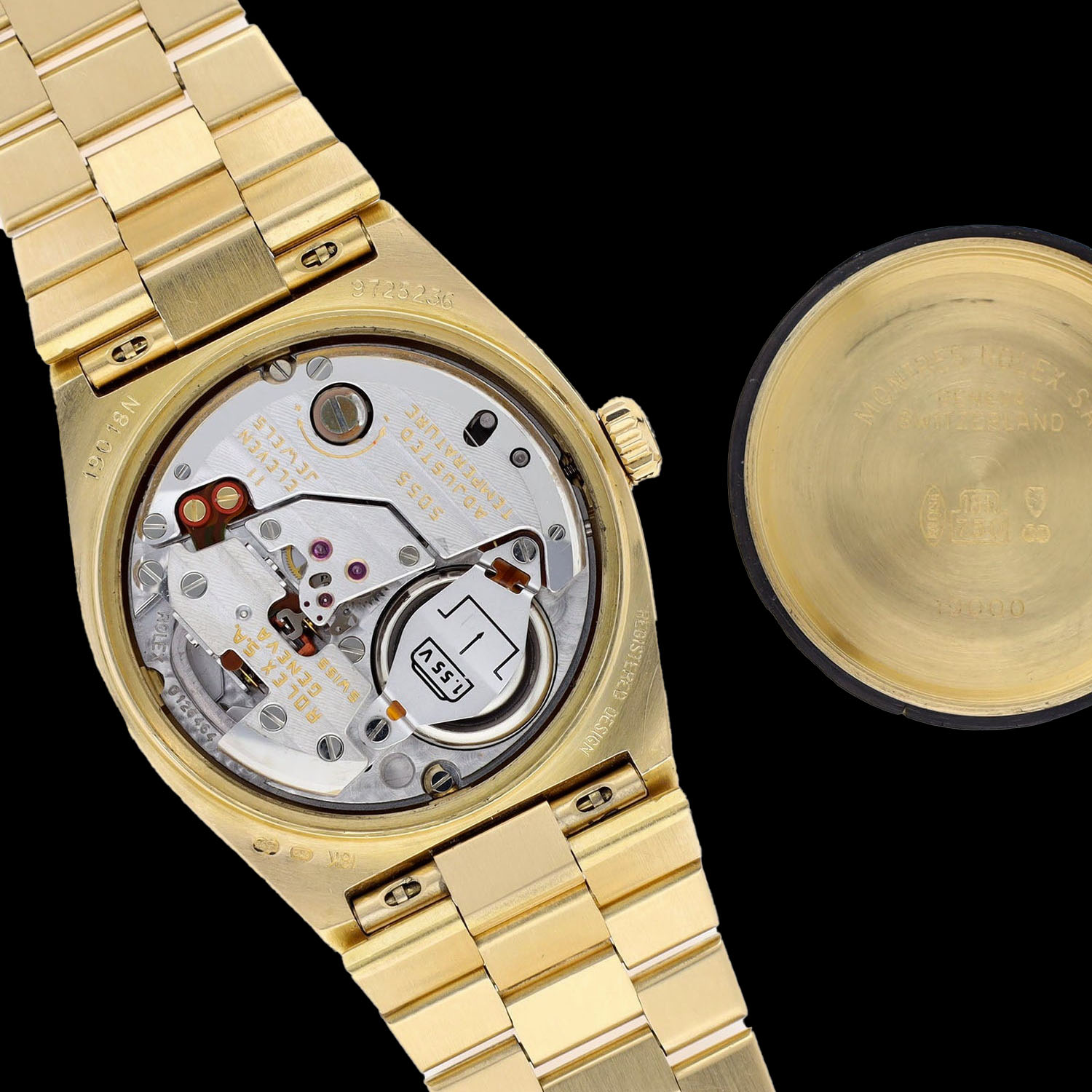
Ref. 19018 featured a yellow gold Oyster case, fluted bezel and President bracelet, just like the mechanical models, although the cases are easily identified with a flatter, more angular aesthetic with an integrated bracelet design. White gold was soon introduced with ref. 19019. As with all Day-Date models, a lot of variants were created with diamonds, rubies and sapphires, bringing many Oysterquartz reference numbers with them, but the standard yellow gold ref. 19018 is our focus. The models were certainly popular, especially early on, although only around 25,000 models of all types were produced in 25 years.
Day-Date Ref. 18238 (1988 – 2000)
This model really brought the Day-Date to the modern era with calibre 3155, finally giving users a double quickset feature – both the date and day of the week could be set quickly via the crown. No more spinning the hands to eternity. Minor calibre changes also included a double bridge for the escapement for more stability, but specs otherwise remained the same with a 48-hour power reserve. The jewel count increased from 27 to 31, but the movement was surprisingly a bit slimmer than the outgoing calibre 3055. The champagne dial matched the yellow gold case, fluted bezel, and President bracelet, and many had vertical lines for a bit of texture (which worked well with the bezel). As always, a lot of dial variants were available, including colours, textures, materials and those with precious stones. By the end of production, there were 25 available languages for the day-of-the-week window.
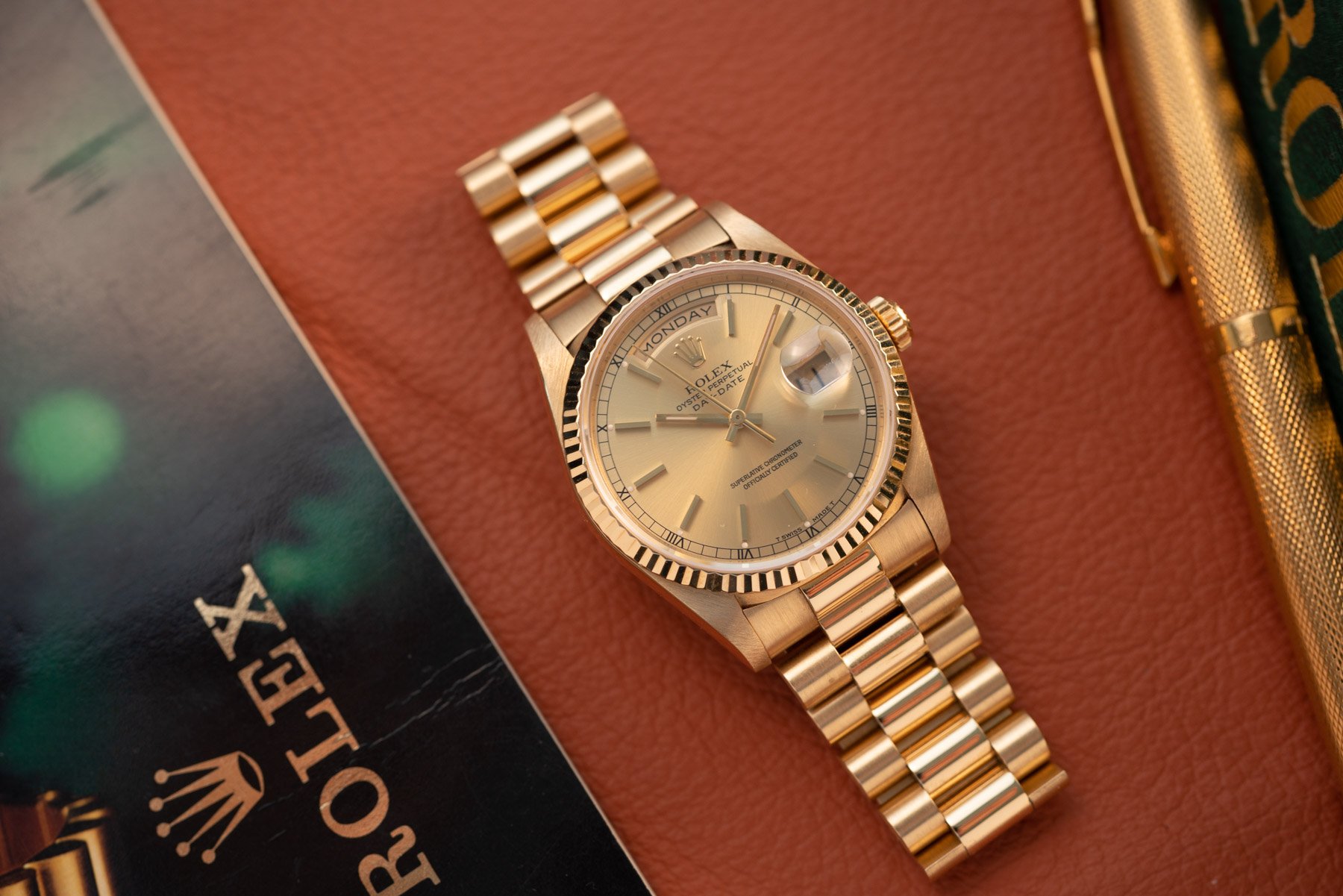
Day-Date Ref. 118238 (2000 – 2009)
Not much changed with the ref. 118238 from a mechanical standpoint (initially) as it still used calibre 3155, although the case was redesigned with broader lugs for more wrist presence and the Crownclasp was improved for better security and aesthetics. The big change was with the President bracelet, which went from traditionally hollow links to solid, significantly adding weight (and value) with the additional precious metal. The rehaut also added an engraved ROLEX ROLEX ROLEX to battle counterfeiting, along with its unique serial number. All Day-Date models adopted this moving forward.
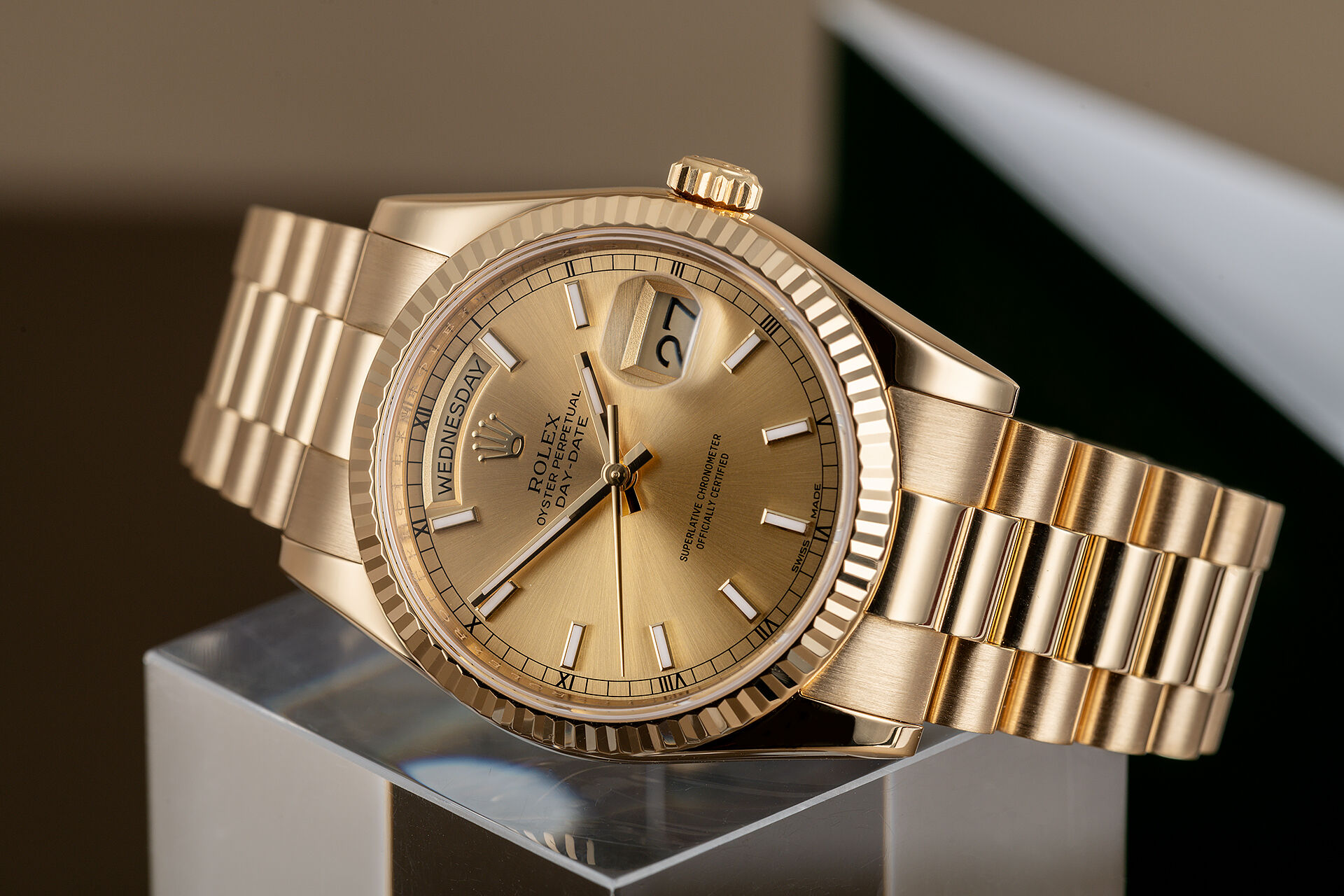
Let’s go back to calibre 3155 for a minute, as something did change in 2015. The movement was regulated to a tighter standard and went above COSC-certified to Rolex’s own Superlative Chronometer rating (from -4/+6 seconds per day to -2/+2 seconds per day). This set a new standard for Rolex precision and mechanical excellence, surpassing virtually all other luxury brands.
The Day-Date II 41mm Ref. 218238 (2008 – 2015)
Until 2008, all Day-Date models had 36mm cases, but the Day-Date II debuted with a 41mm case to celebrate Rolex’s centennial anniversary. This is also a recent trend with Rolex to keep up with contemporary tastes – we saw it with the larger than 36mm Explorer, Datejust and so on within the last 20 years. It was the largest Day-Date ever to be introduced and (visually) not just because of the case size. The bezel (in particular) and lugs were more prominent than the upcoming 40mm model, making it seem more than just 1mm larger in size. This reference certainly had the most wrist presence of any Day-Date model, but some felt that it strayed too far from the classic formula and it proved to be a disappointing seller. So, it was relatively short-lived, with a production run of seven years, but it also left its mark as one of the more memorable references.
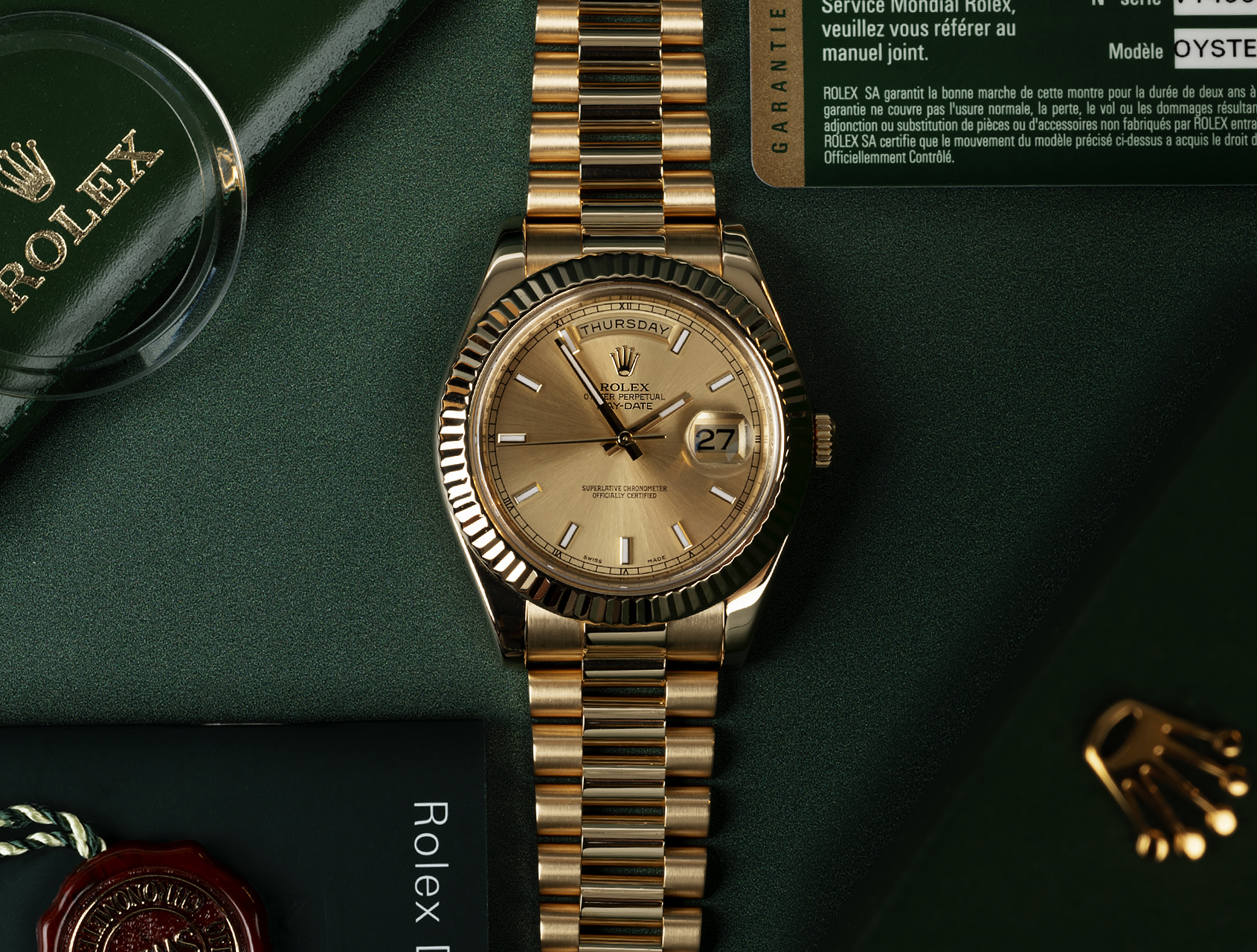
The President bracelet adopted ceramic inserts in between the links to prevent “stretching” over time, which is a known issue for older models. However, this was only available for platinum bracelets on the Day-Date II, but that expanded with the next release.
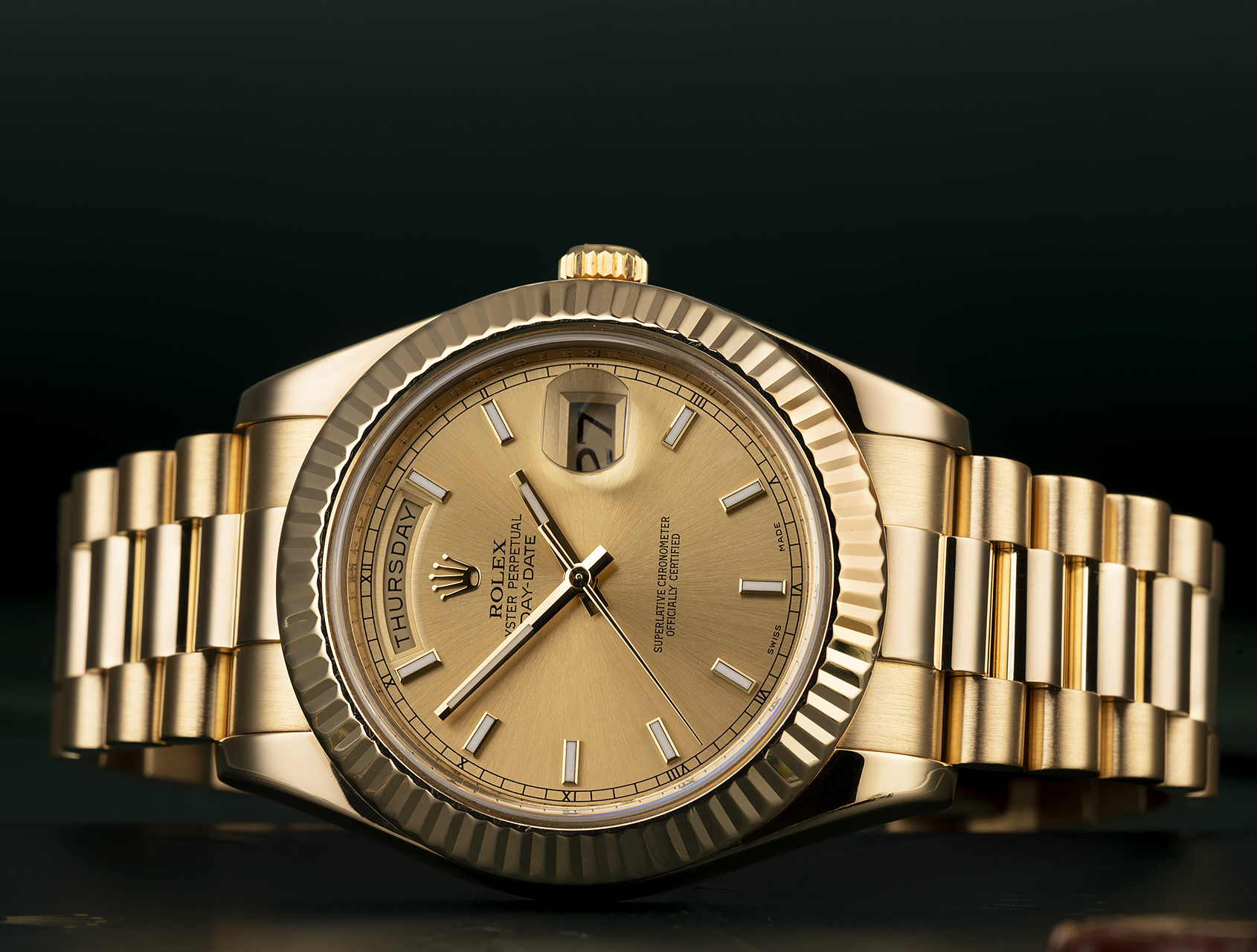
Powering this model was calibre 3156, which wasn’t a big departure from calibre 3155, as seen in ref. 118238. It had a Parachrom hairspring (first introduced in 2005) and Paraflex anti-shock system, but the power reserve remained at 48 hours. This Superlative Chronometer was made specifically for the Day-Date II but was then replaced with the following model and represents the last (and best) of the “old guard” of Day-Date movements. The next calibre brought significant advancements to the series.
Day-Date 40 Ref. 228238 (2015 – Present)
Rolex wasn’t ready to abandon the larger Day-Date option, but several aesthetic changes were made to address the Day-Date II shortcomings. The case shrank just a bit to 40mm, but the real visual changes were a slimmed-down bezel and narrower lugs, more in line with the classic design. It was basically a larger 36mm model, while the Day-Date II had a beefier, sportier look than before. As mentioned, the President bracelet now has ceramic inserts between the links for all metals, not just platinum, significantly improving the bracelet’s longevity for all models. Dials with a new laser-etched pattern were also introduced with the Day-Date 40, adding to an already wide variety of dial options. At this point, 26 different languages were available for the day of the week.
The most notable change was the new calibre 3255, which brought the patented Chronergy escapement and a 70-hour power reserve. The new escapement is essentially a modified lever escapement that improves efficiency by around 15 per cent. The main difference is less mass, including a skeletonized escape wheel, smaller pallet stones and a lighter pallet fork. The geometry of the escape wheel teeth and pallet stones was changed as well, and the poise of the balance wheel was improved by a factor of three. The use of nickel-phosphorus also made it very anti-magnetic. The 3255 is still a Superlative Chronometer at -2/+2 seconds per day, so accuracy remains the same, but the movement is much improved overall.
The Day-Date 40 remains in Rolex’s portfolio today alongside the traditional Day-Date 36 and both run on calibre 3255. Yellow, Everose (rose), white gold and platinum are available, along with a smorgasbord of dials, bezels, precious stones and so on. In fact, there’s such a large variety of options, not including specialized and custom orders through the years, that the Day-Date remains one of the most difficult models for collectors as it’s nigh impossible to find “everything”. However, it just may provide the ultimate “thrill of the chase” for the right enthusiast with an eye for the best and, well, deep pockets. You never know what unique and one-of-a-kind Day-Date might pop up at an auction or through private sales.
Collectors and Enthusiasts
The Day-Date overall isn’t a rare model by any stretch, and with close to 70 years of production, there’s quite a lot available on the pre-owned market. The US market tends to have the most available and yellow gold models can be found for under USD 8,000 on a leather strap and around USD 12,000 on an original bracelet for clean examples (often ref. 1803). That’s not bad at all for such a historic and premium Rolex model, regardless of age. If you want to look like a millionaire for a relatively low price, this is a good way to do it. A serviced watch with a professional cleaning and perhaps a light Rolex polish will present itself as a contemporary flagship piece that’ll be the envy of many. And all for less than some new steel sports watches like the Daytona or even the Submariner.
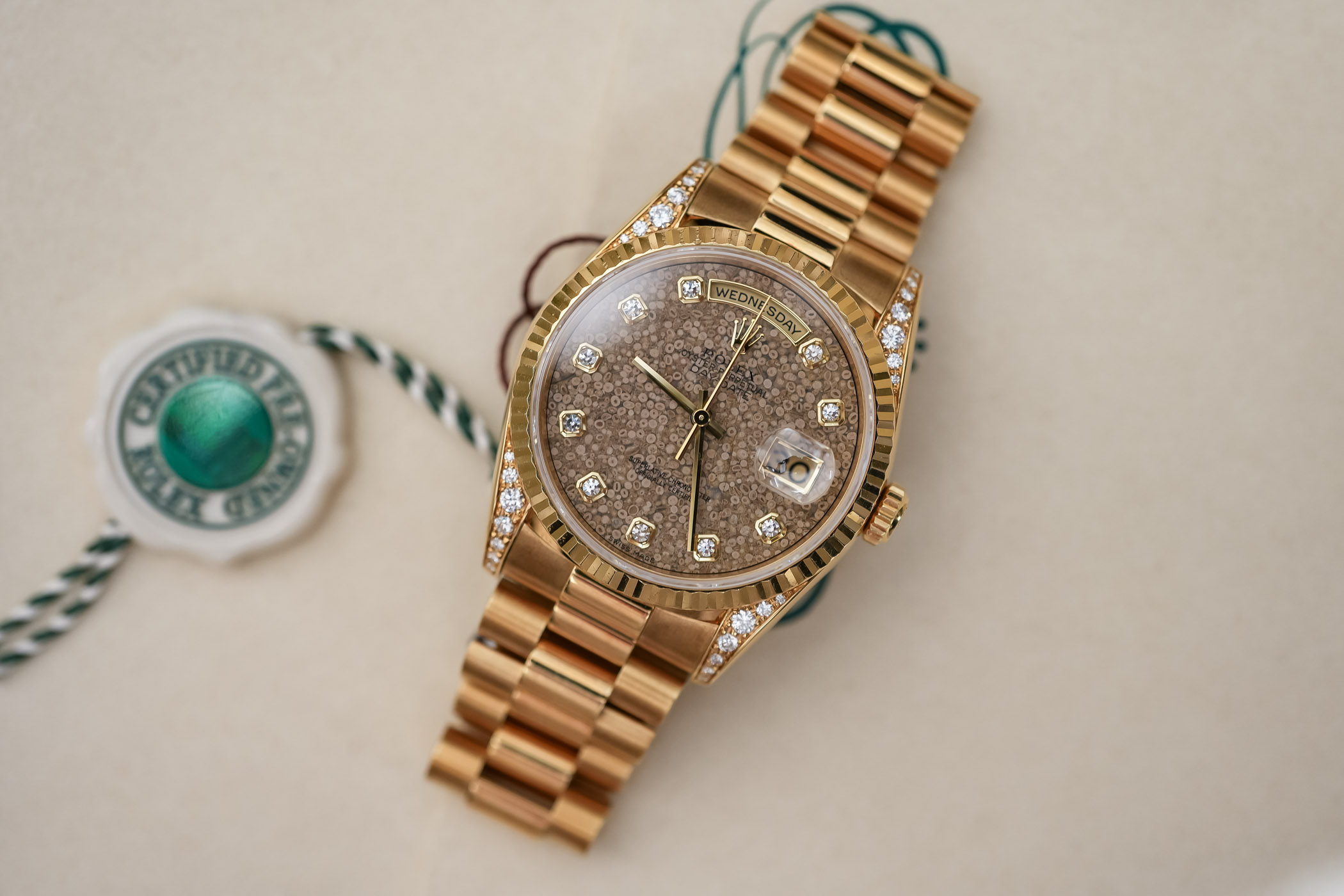
Serious collectors have an opportunity to hunt for rare pieces, particularly one-of-a-kind custom models and perhaps even one of the stainless steel unicorns. Given the nature of all (proper) models being entirely gold or platinum, prices will never drop to the bargain level, but as mentioned above, nice examples won’t totally break the bank. For those with deep pockets, there’s a seemingly limitless supply of unique Day-Date models to round out a collection, whether vintage or more contemporary. Interesting celebrity-owned models are relatively plentiful as well, given the Day-Date’s status symbol from the beginning.

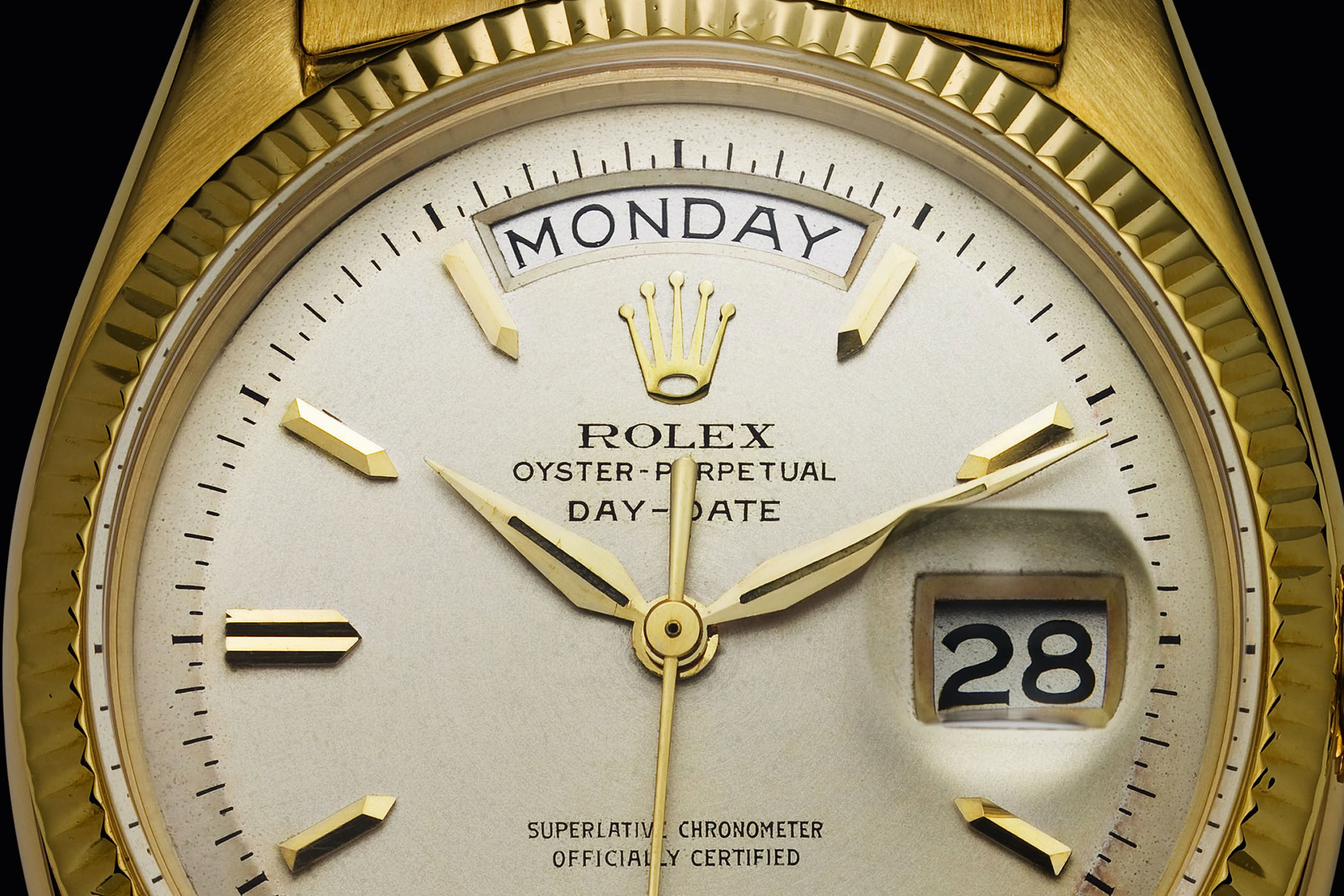
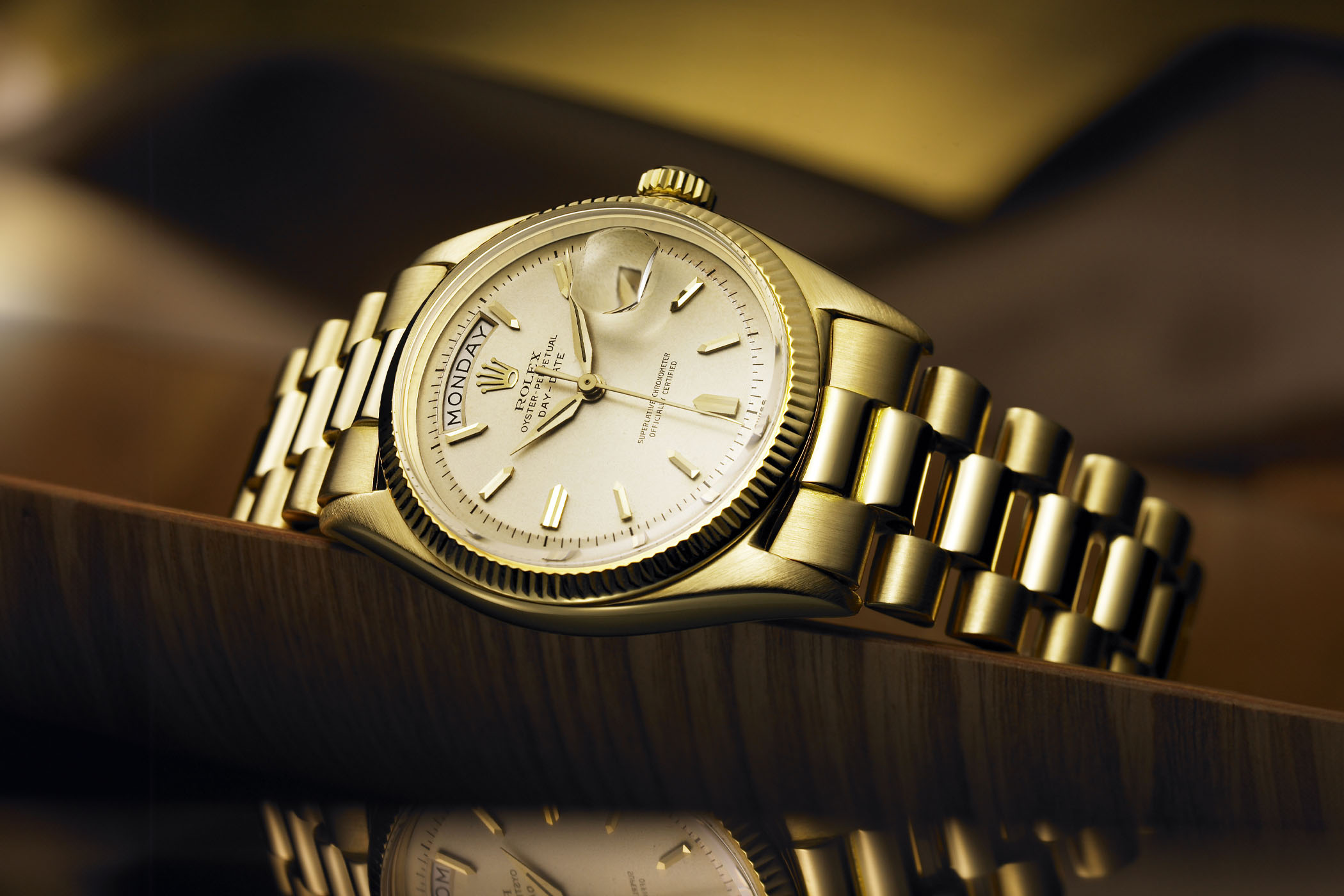
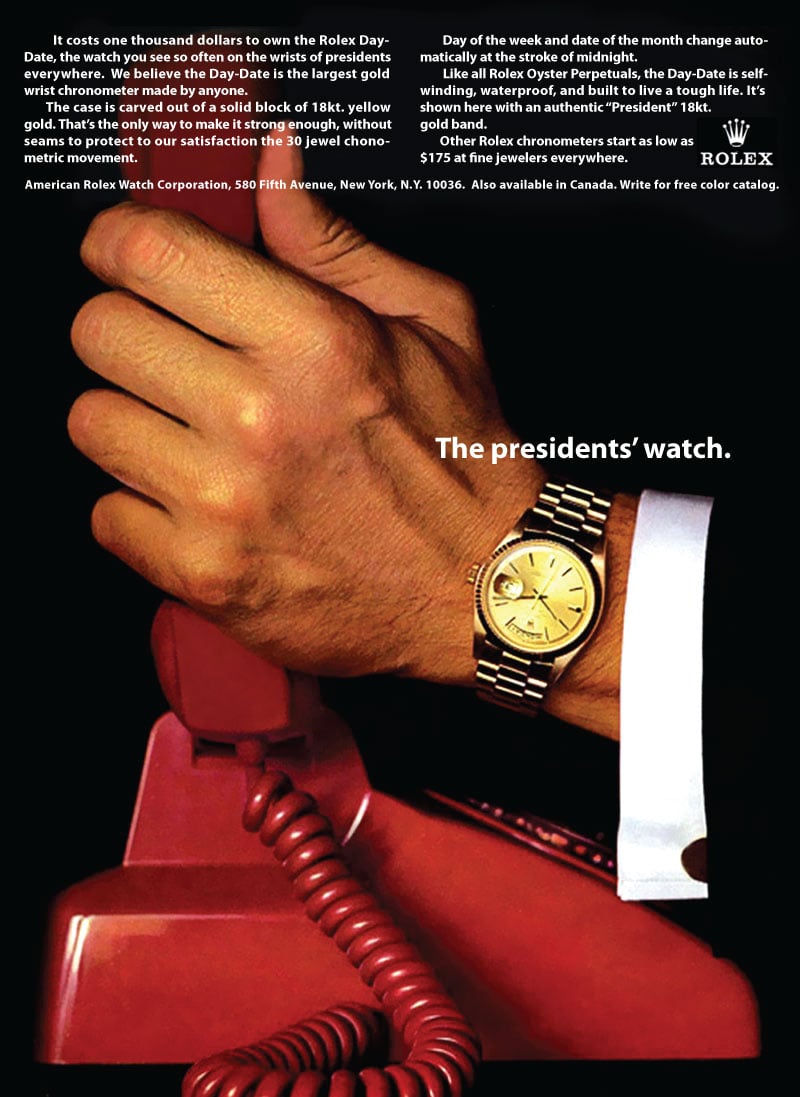
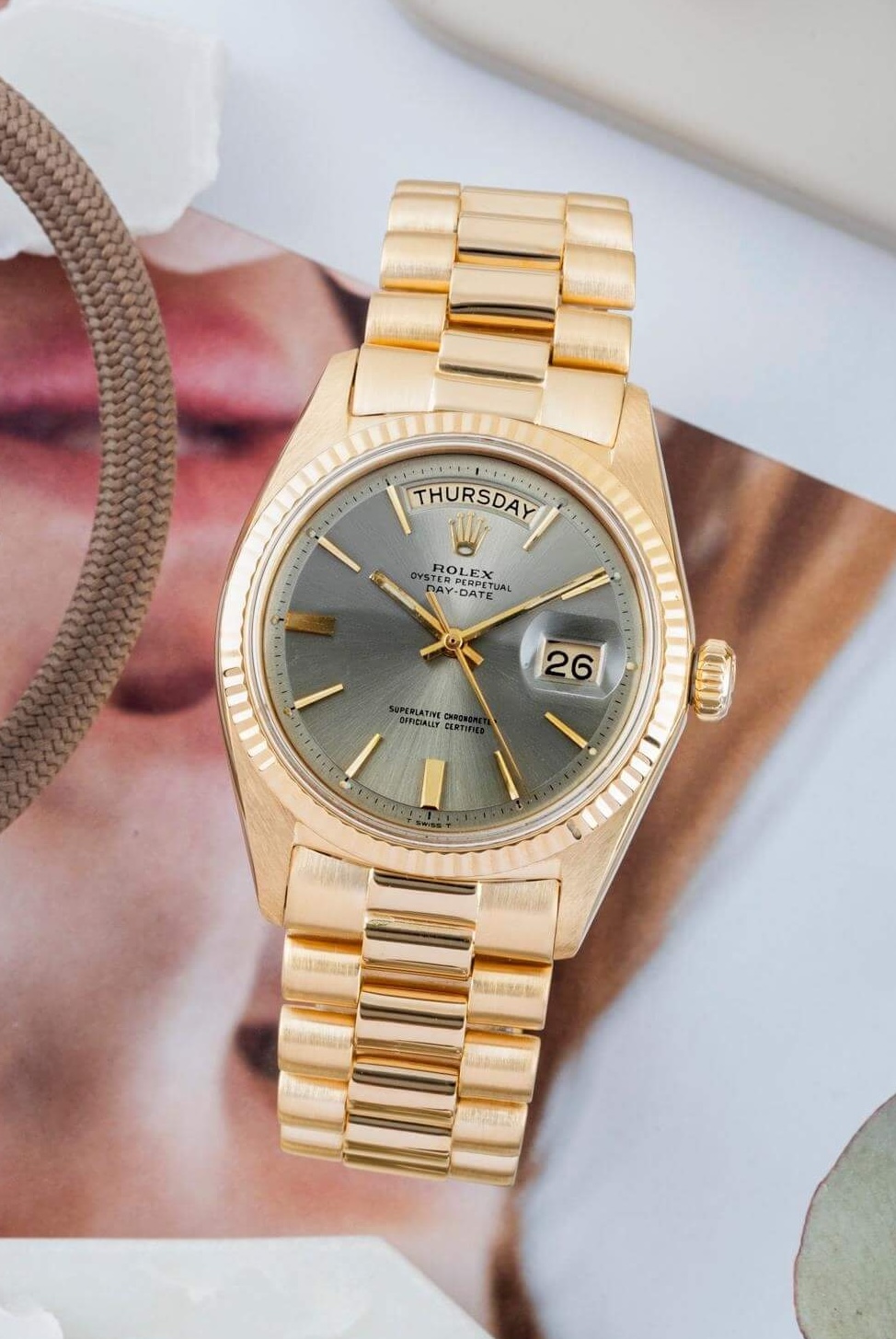
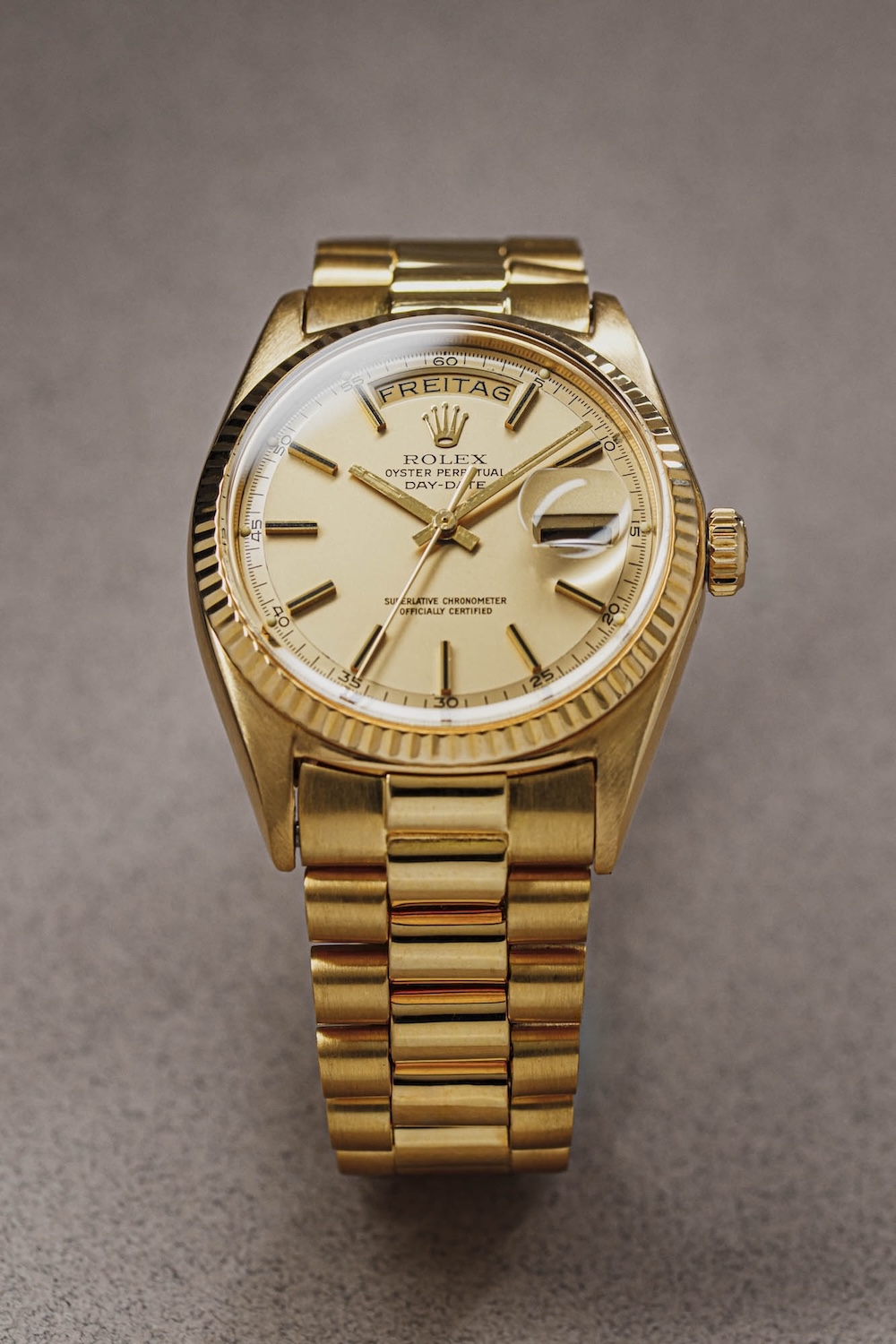
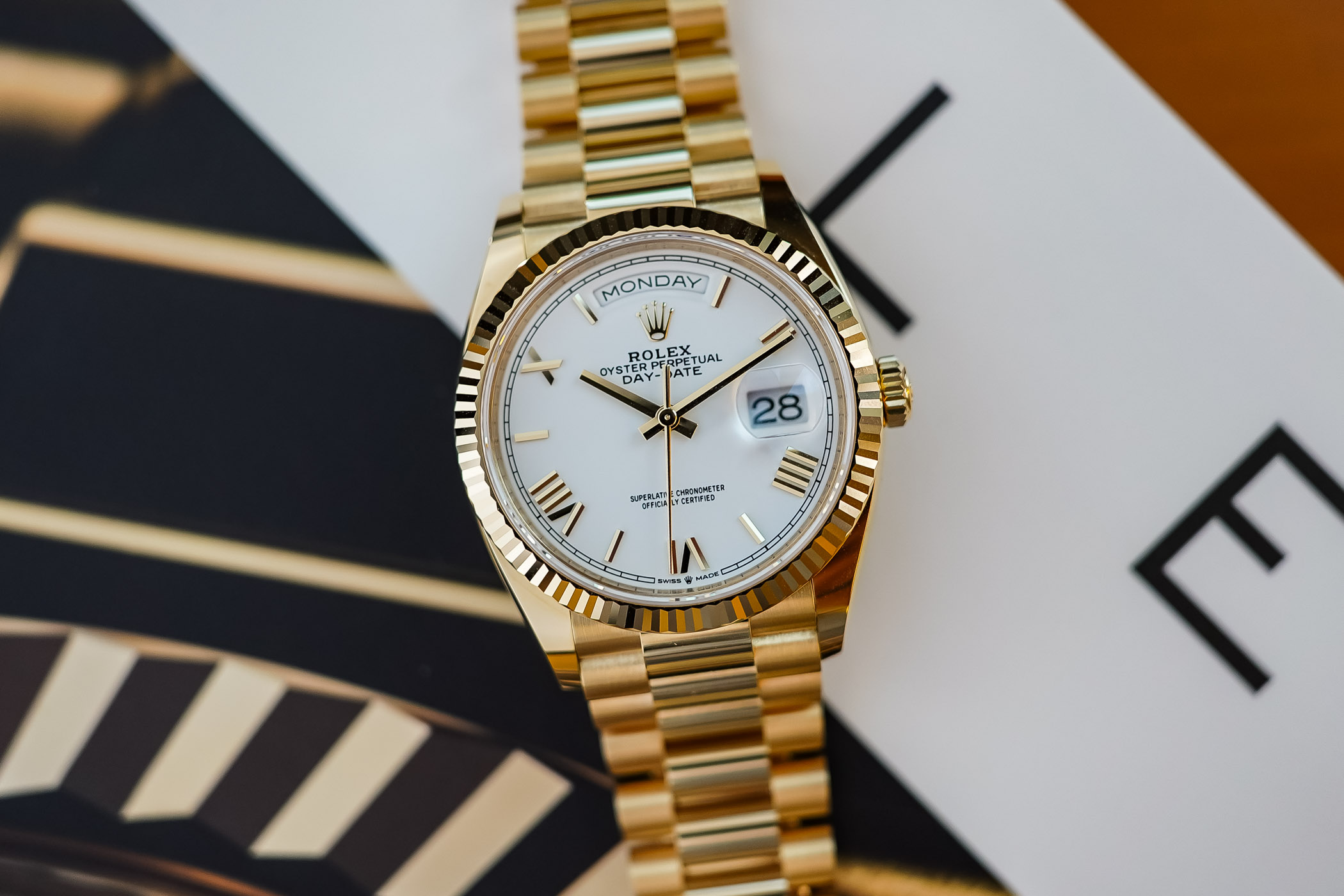
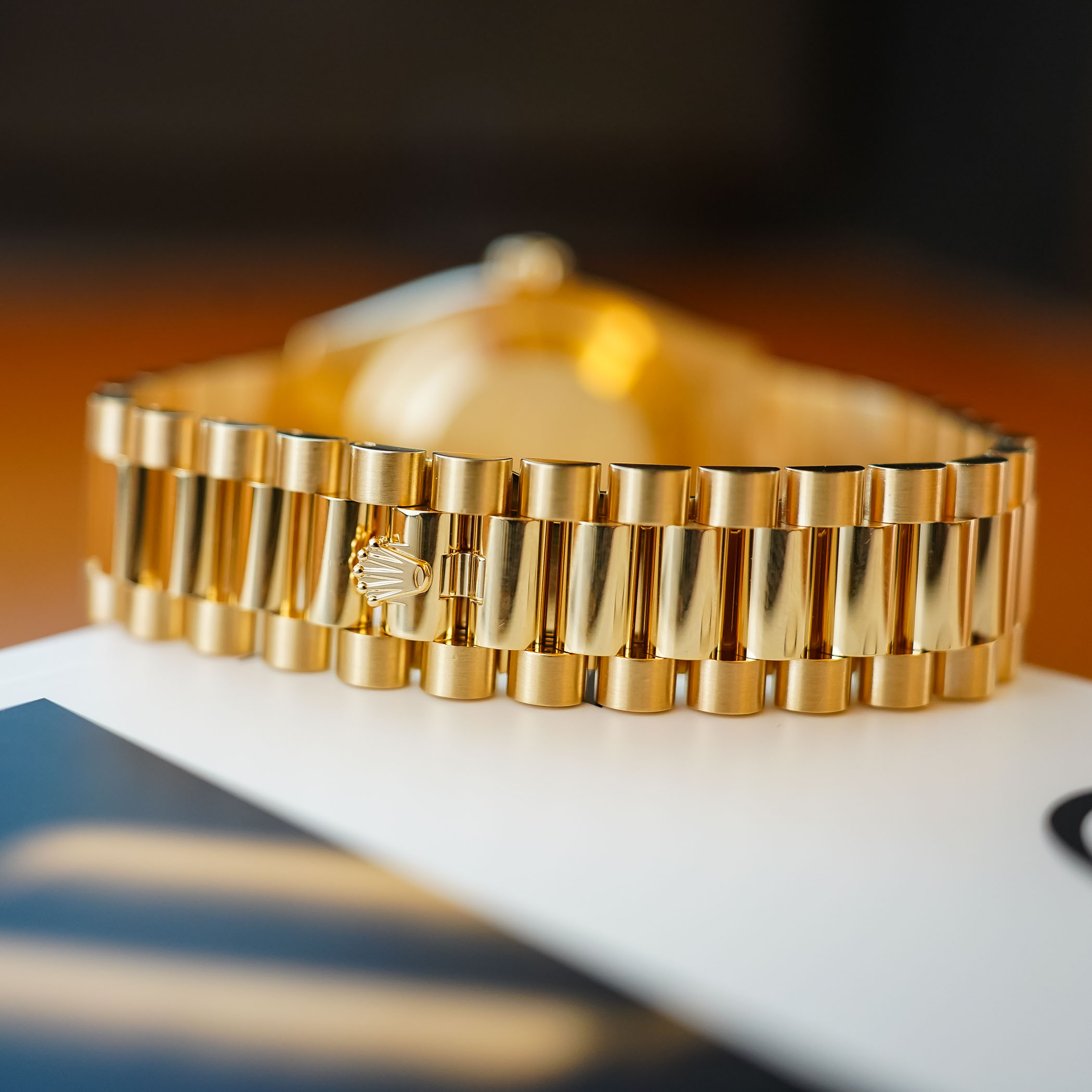
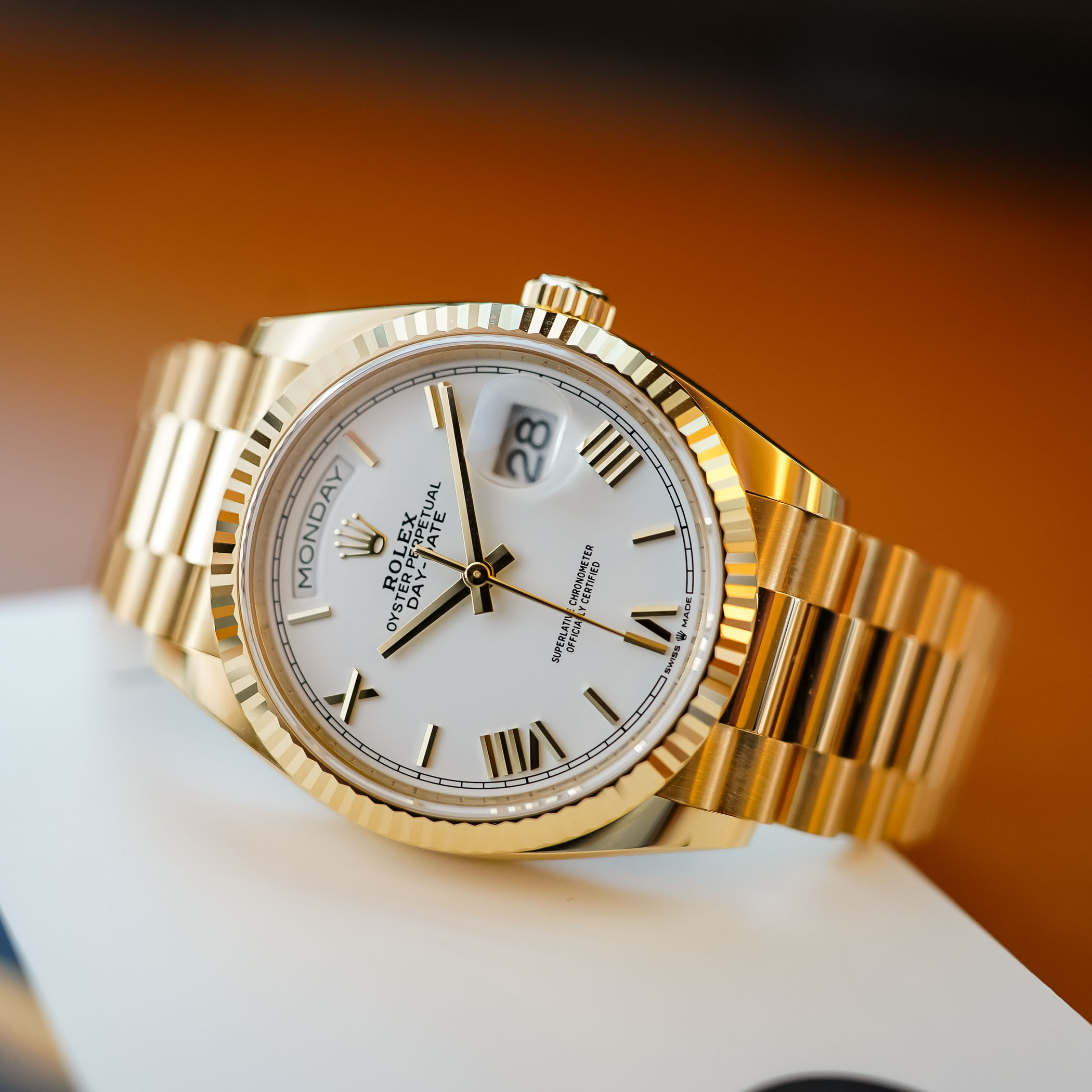
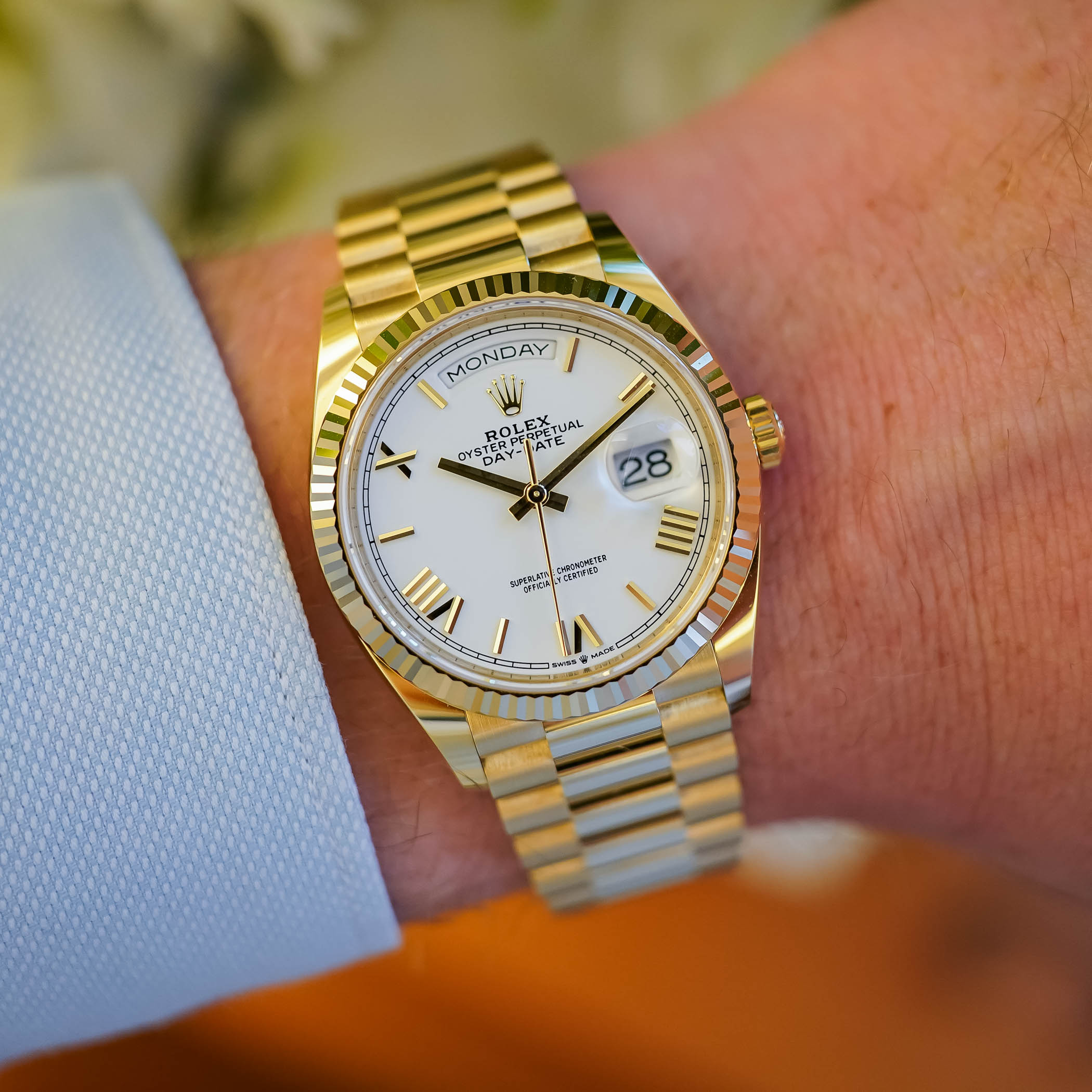
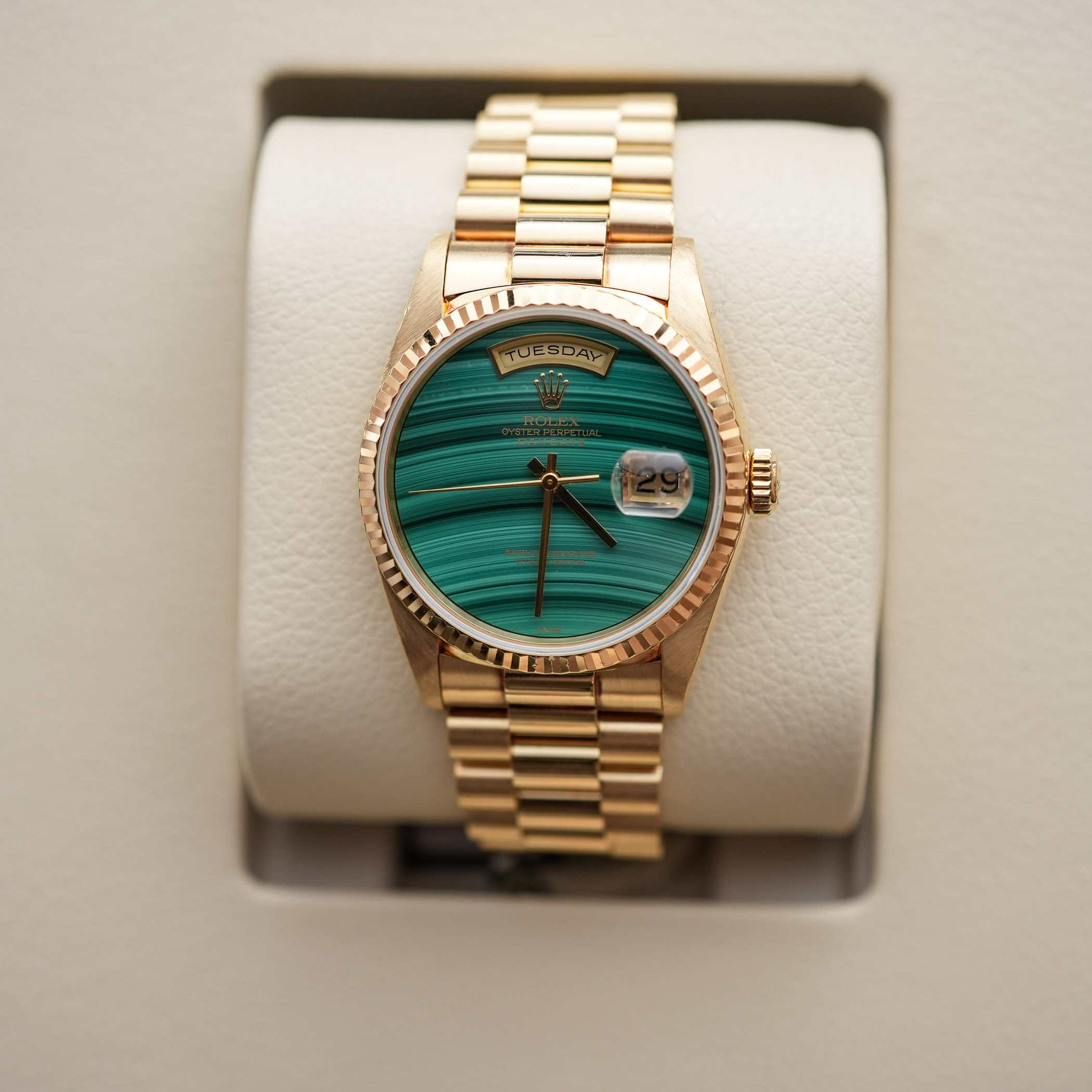
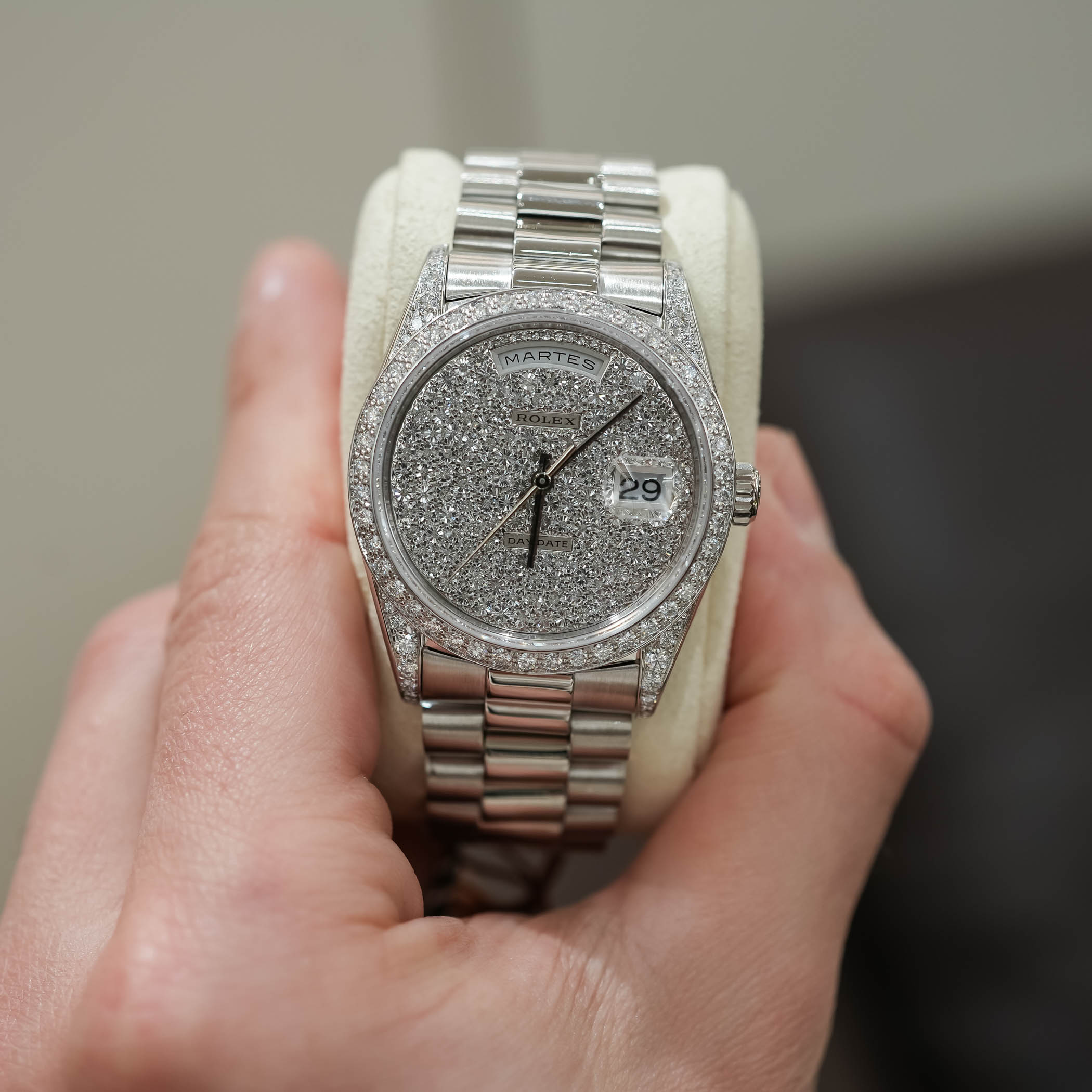
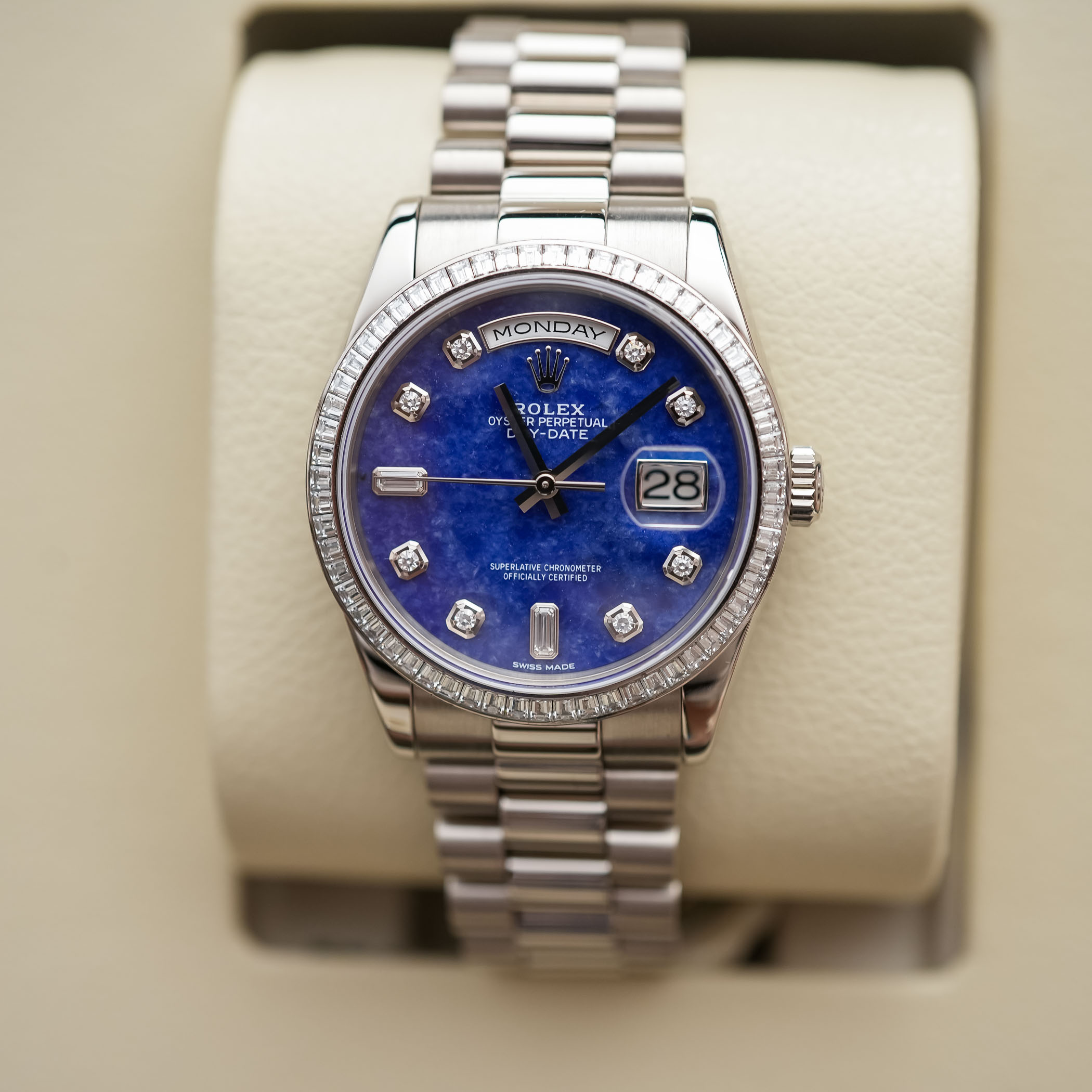
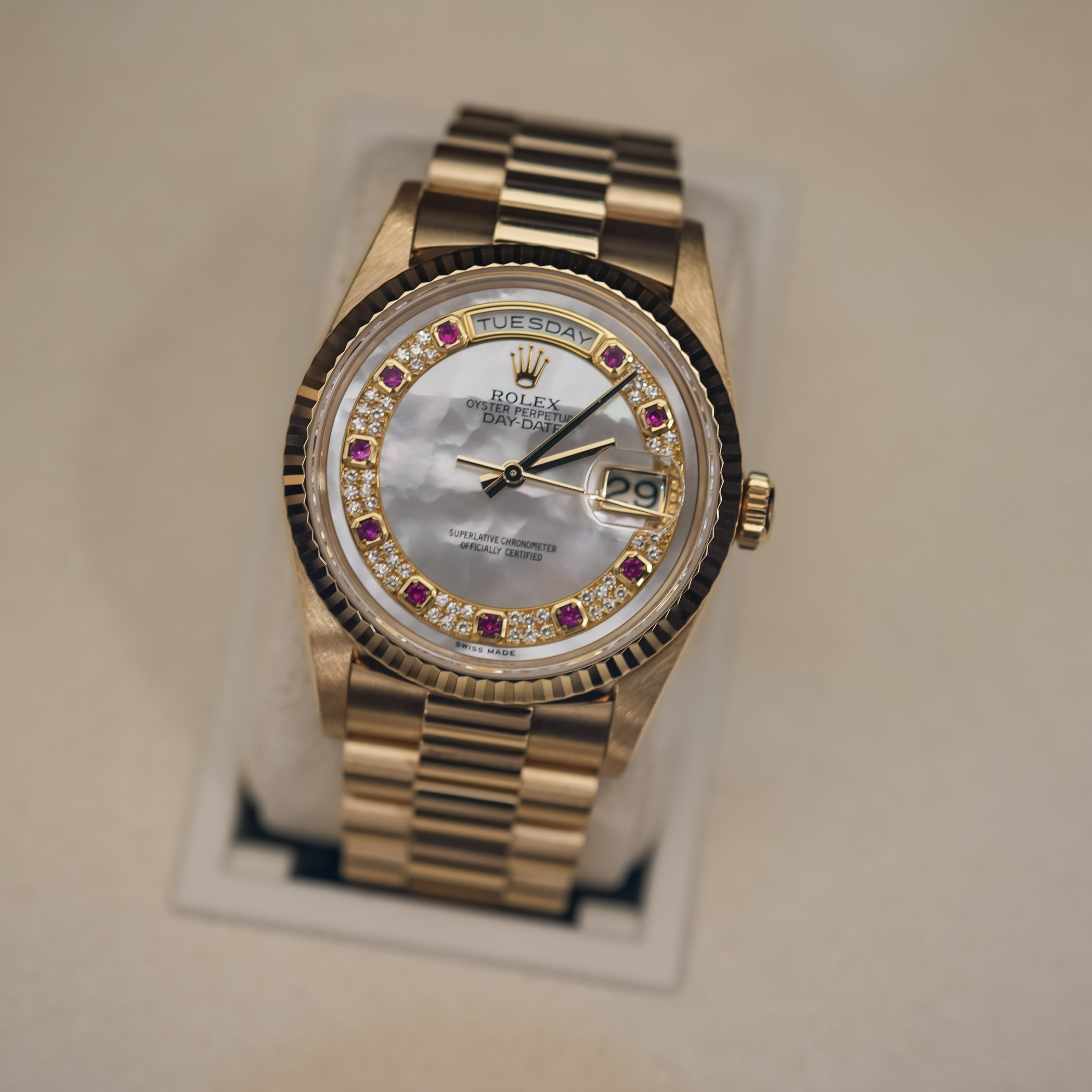
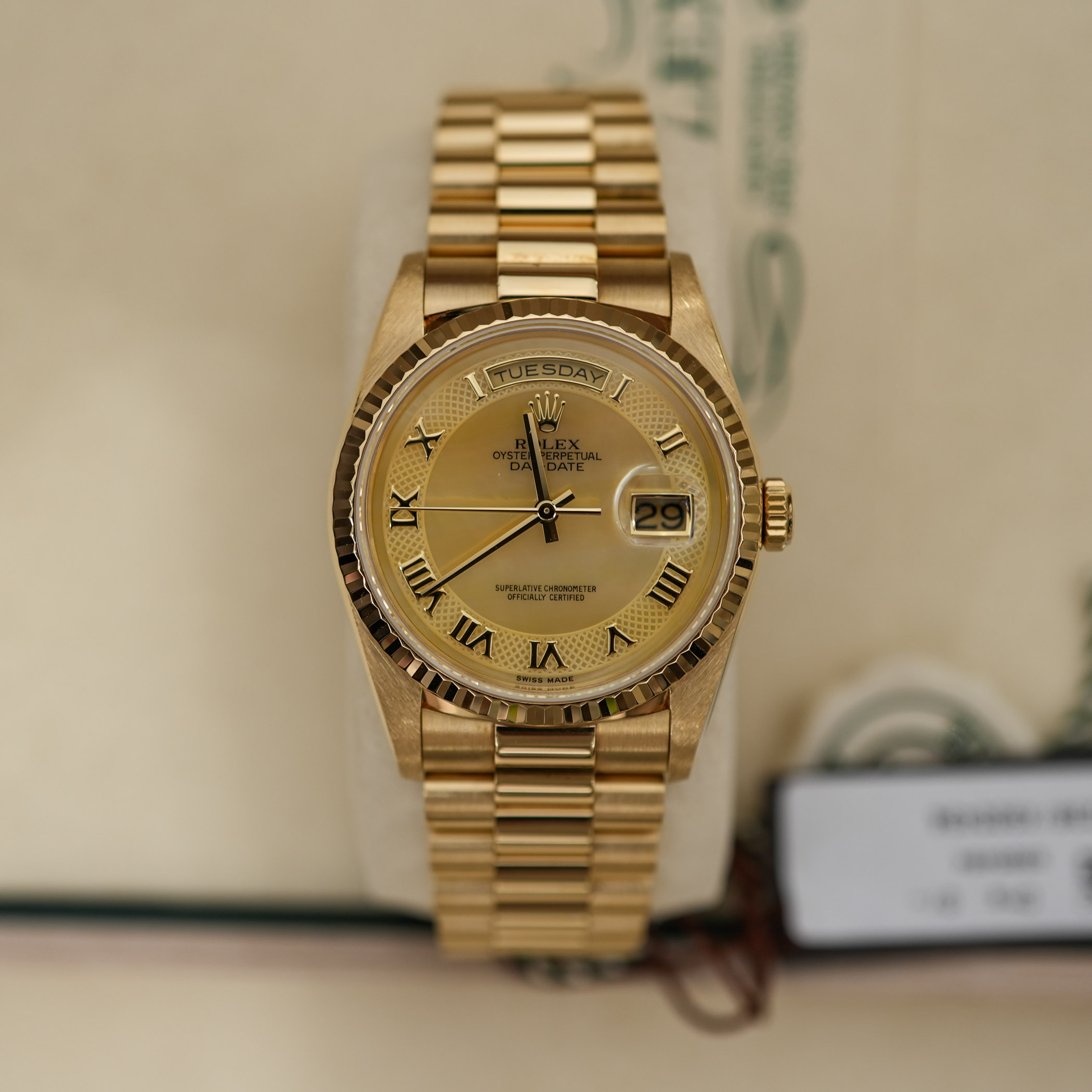
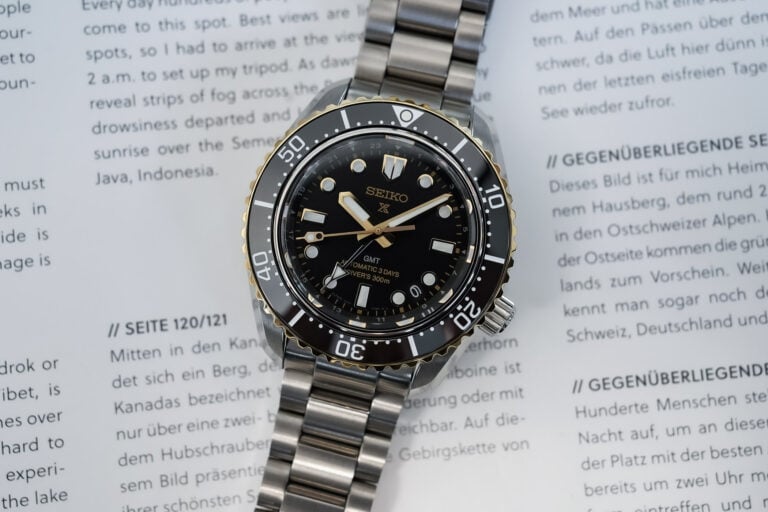
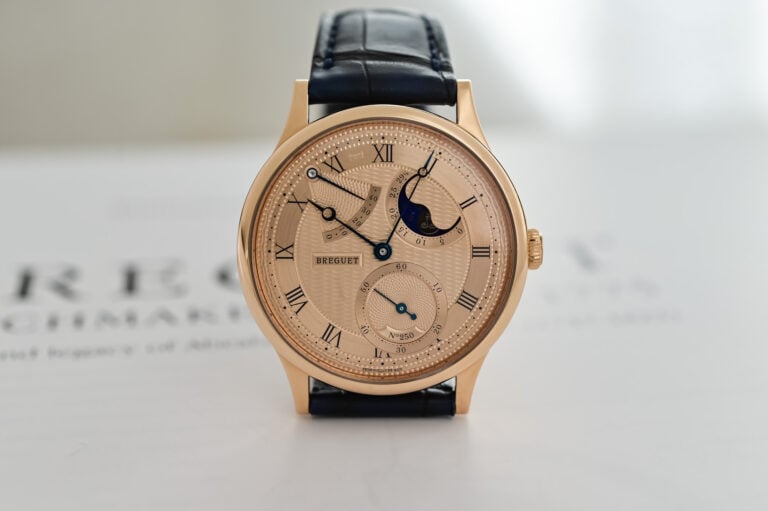
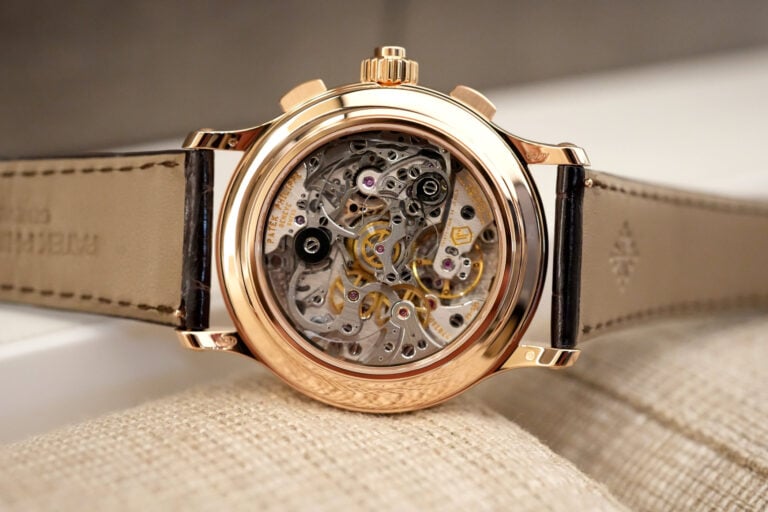
4 responses
Who cares? They’re less a watch brand than a marketing and advertising firm. And they have only one customer, themselves! But for what I have no idea! They’re so wealthy now that they can afford to keep and rent storefronts that don’t sell anything except to show their name. It’s fascinating actually. I’ve not run across something this weird before. Articles are written about non-existent watches, which the brand and articles say to the contrary. It’s a remarkable propaganda job. To what end, however. They’ve stopped selling watches! This is either a remarkable feat of self-destruction or the greatest marketing ploy of all time. But whatever it turns out to be, I’m no longer interested, only bored. I’d rather read about something relevant.
You write out of frustration, understandably, but they are selling almost every watch that comes out from the factory… just not to everyone that wants one.
About the relevance of the article, all I have to say is that Rolex still is the most relevant brand in the industry, so of course articles will be written about their watches and people will be interested in reading them.
I agree with Quincy, but it’s not frustration at not having a mass-produced industrial watch, it’s just annoyance at seeing space taken away from real, interesting watches. Unfortunately there are still many people who struggle to understand that there are many others who don’t give a damn about rolex watches, how many they sell and most importantly who wears them.
I had a mentor in my journalistic career, early on, who said: “People who write to the comments section of magazines and such have mental issues to resolve”. The three examples above are latent proof.